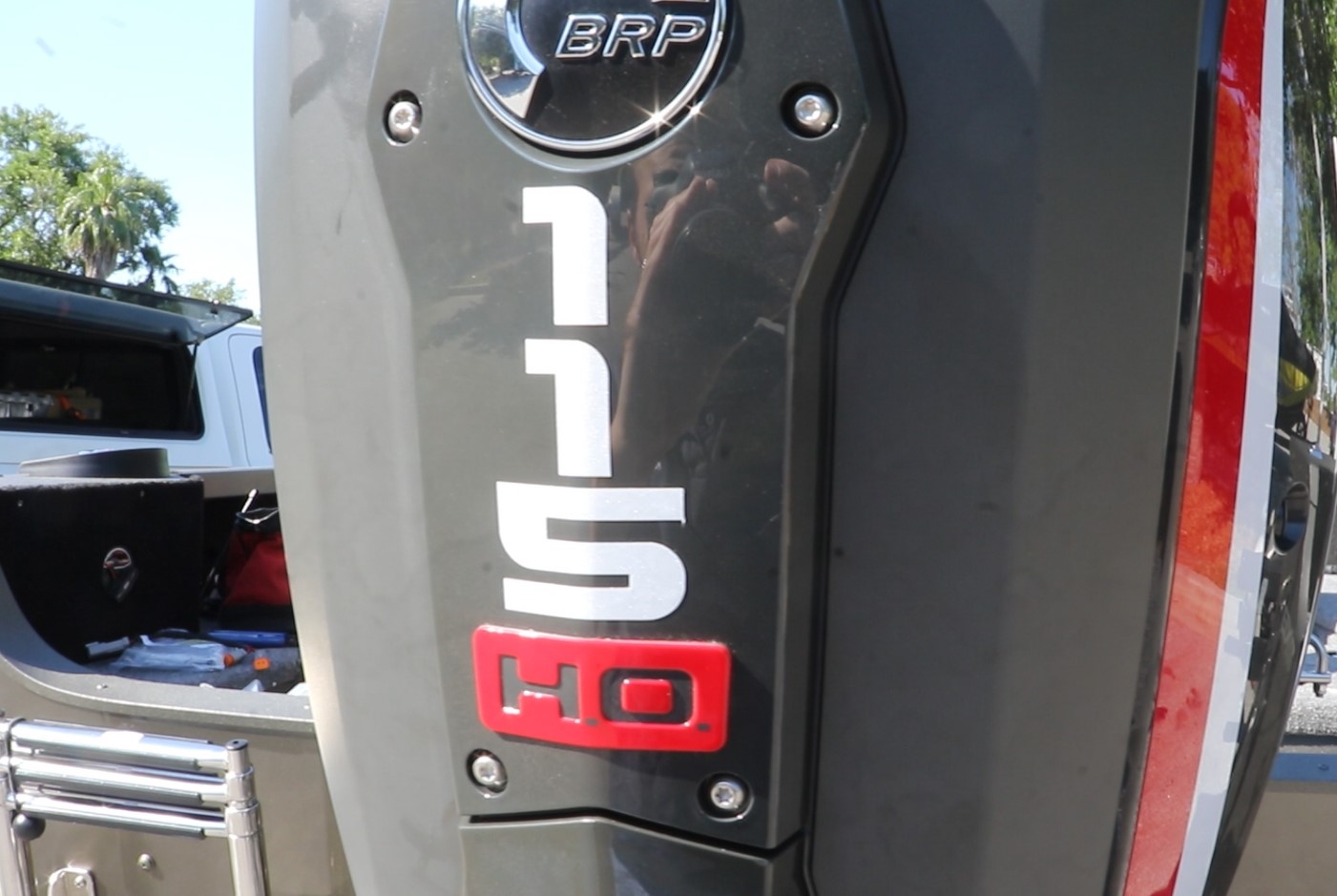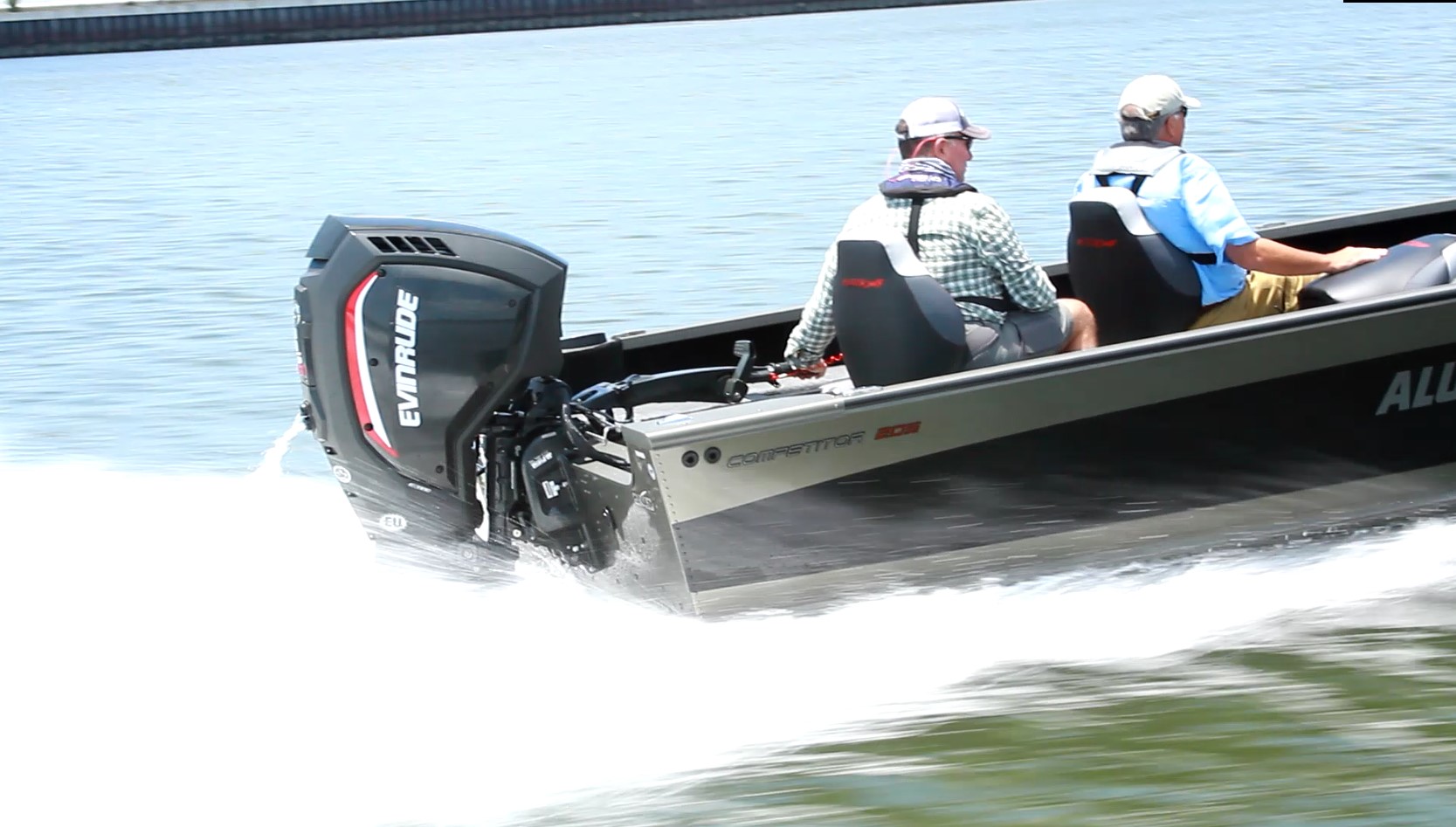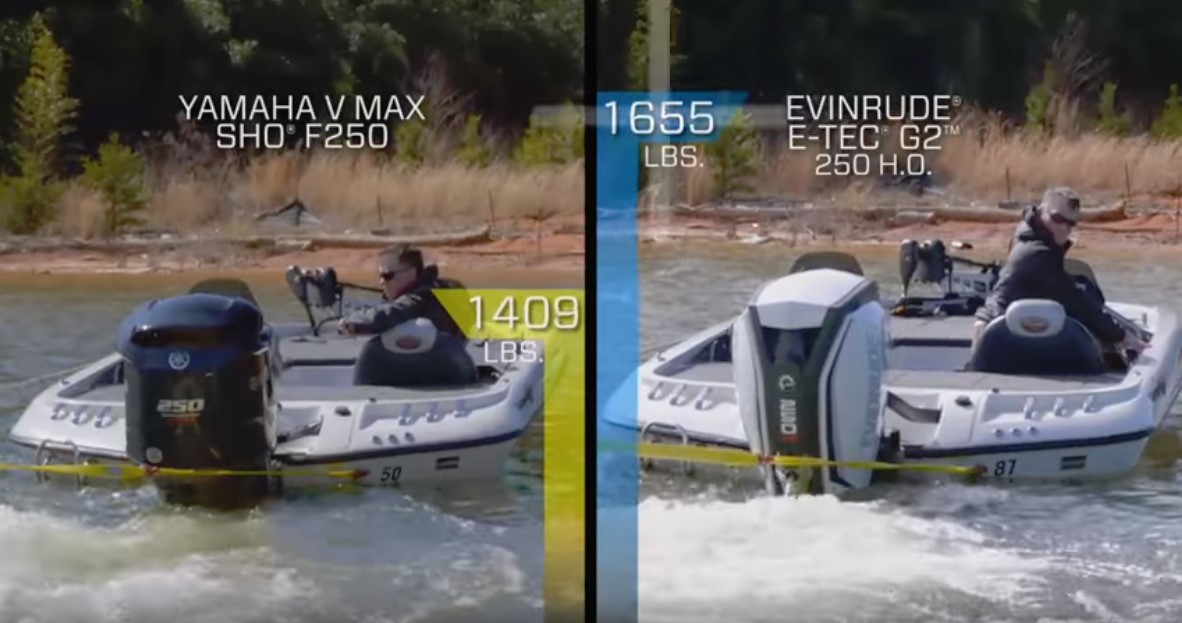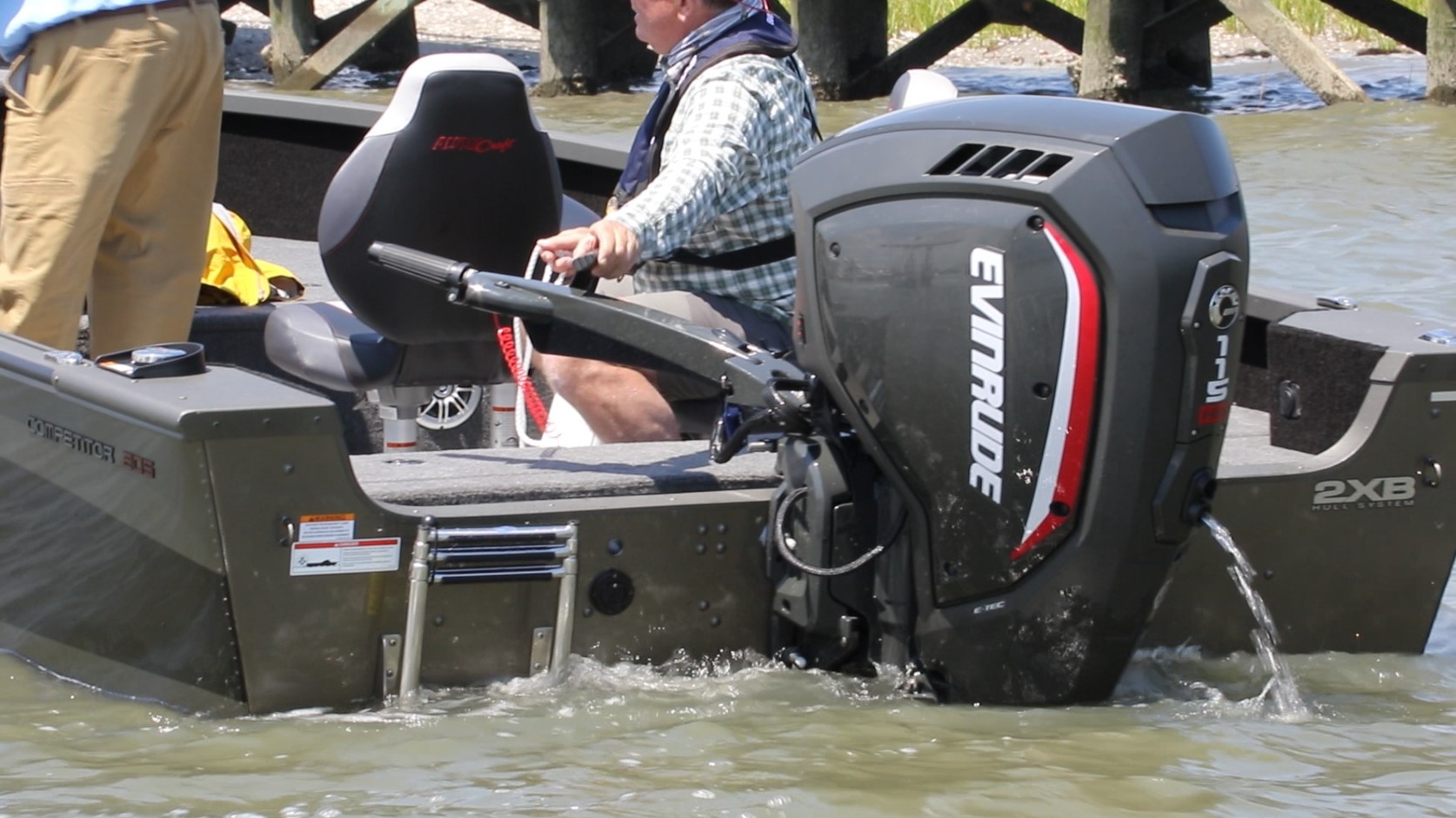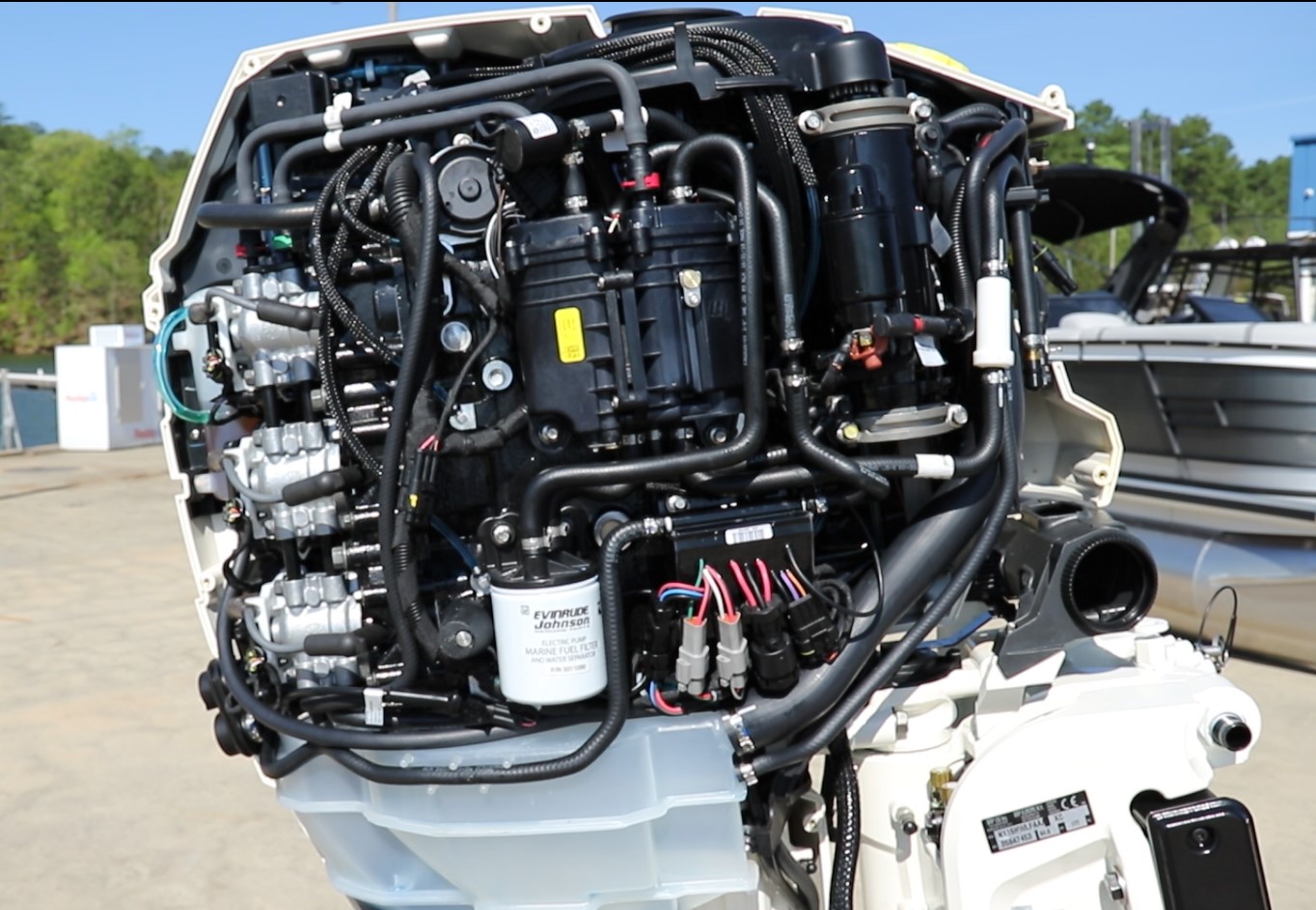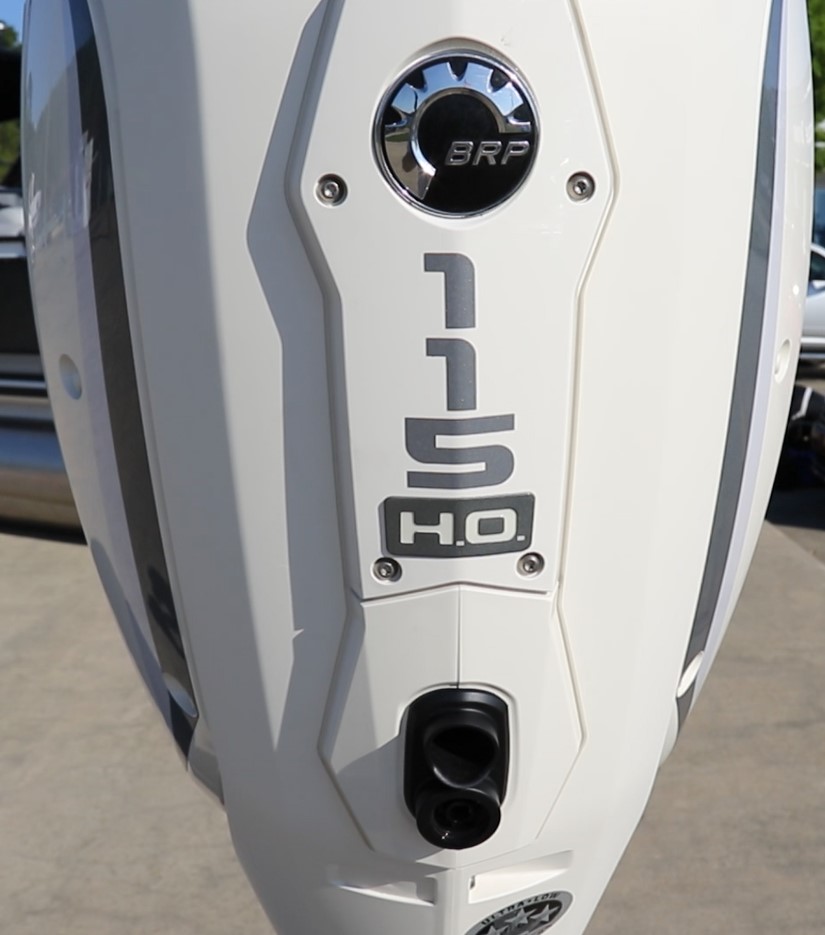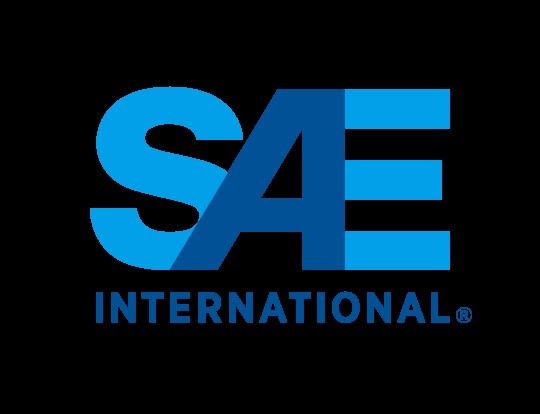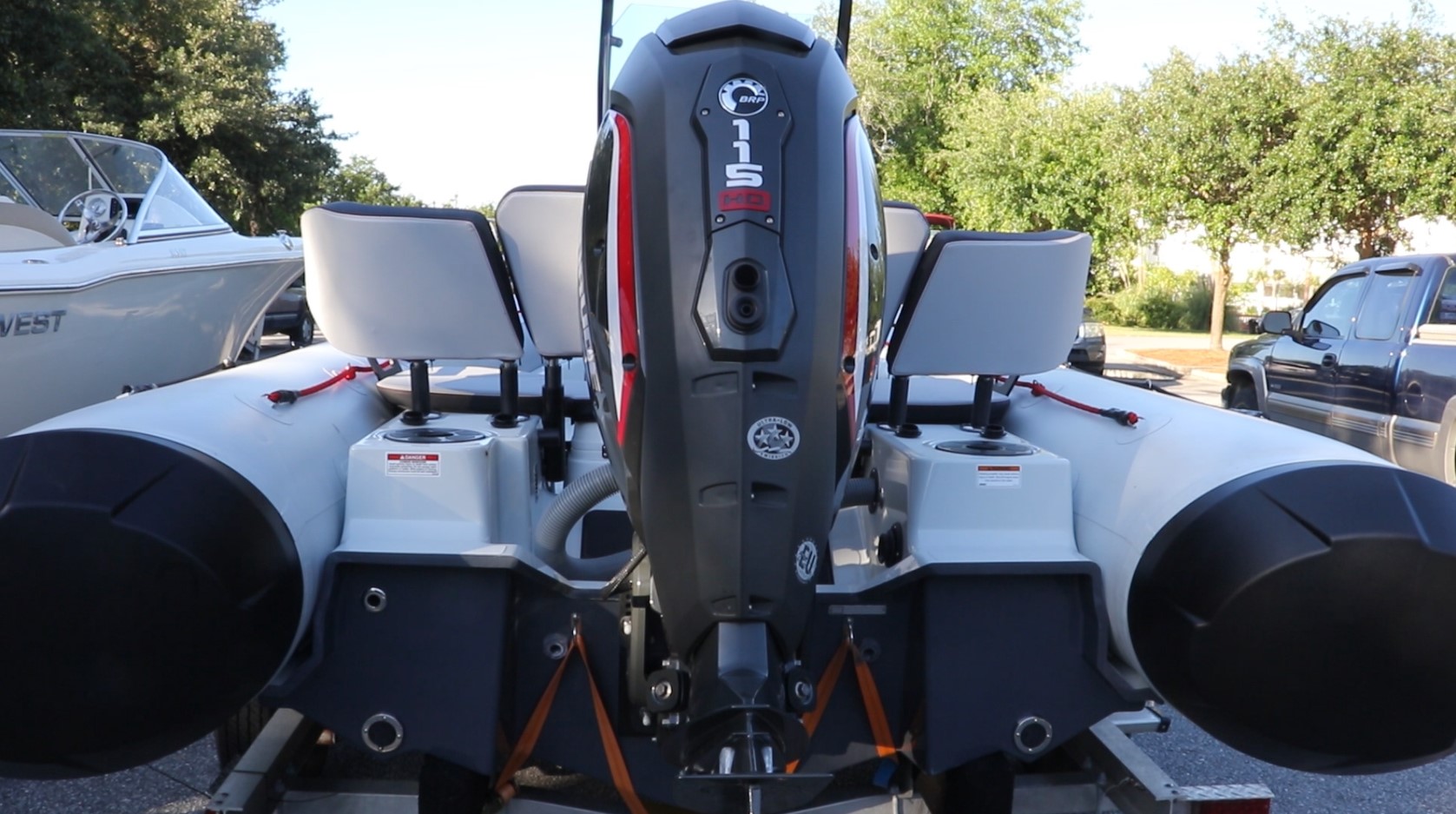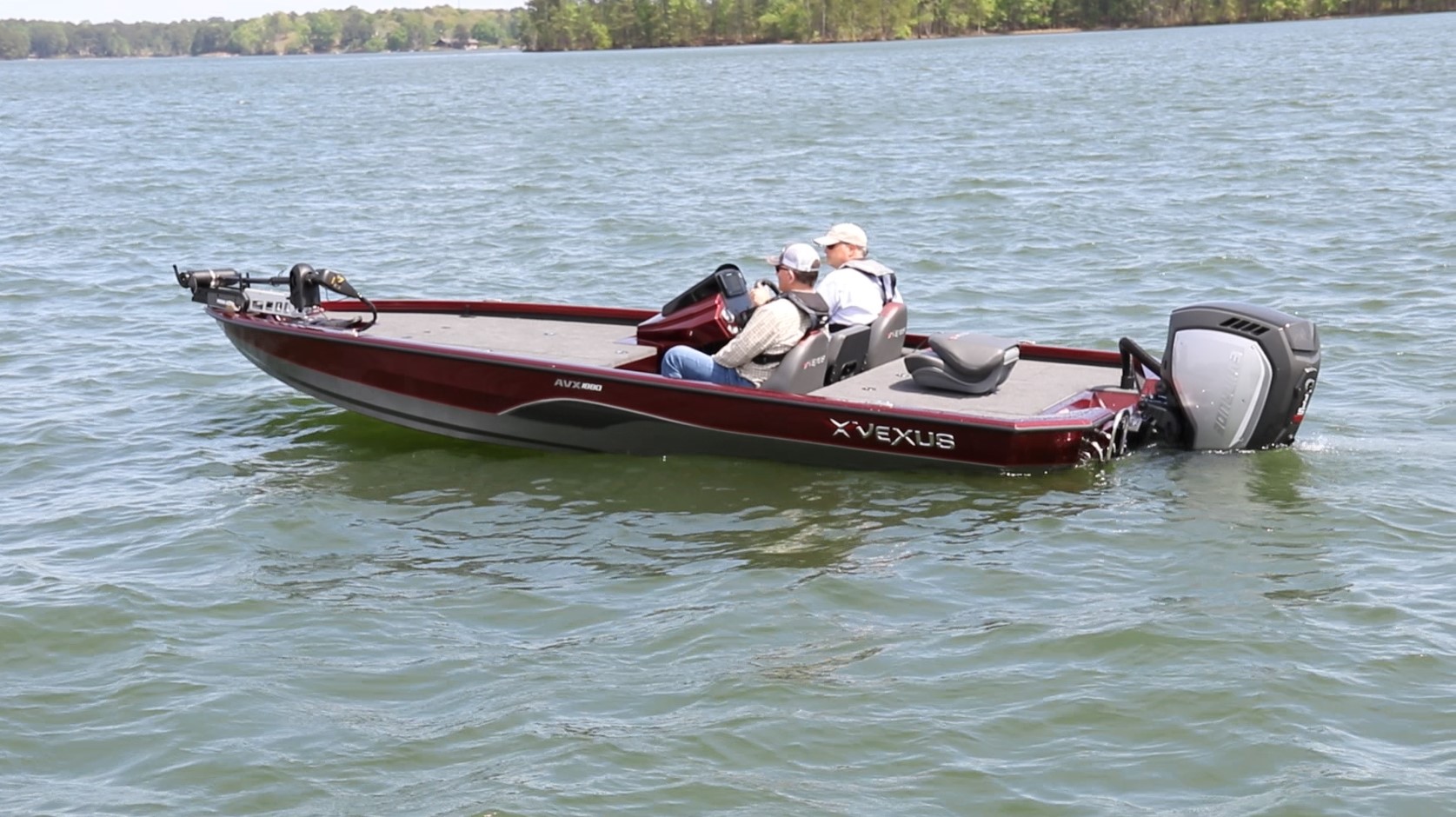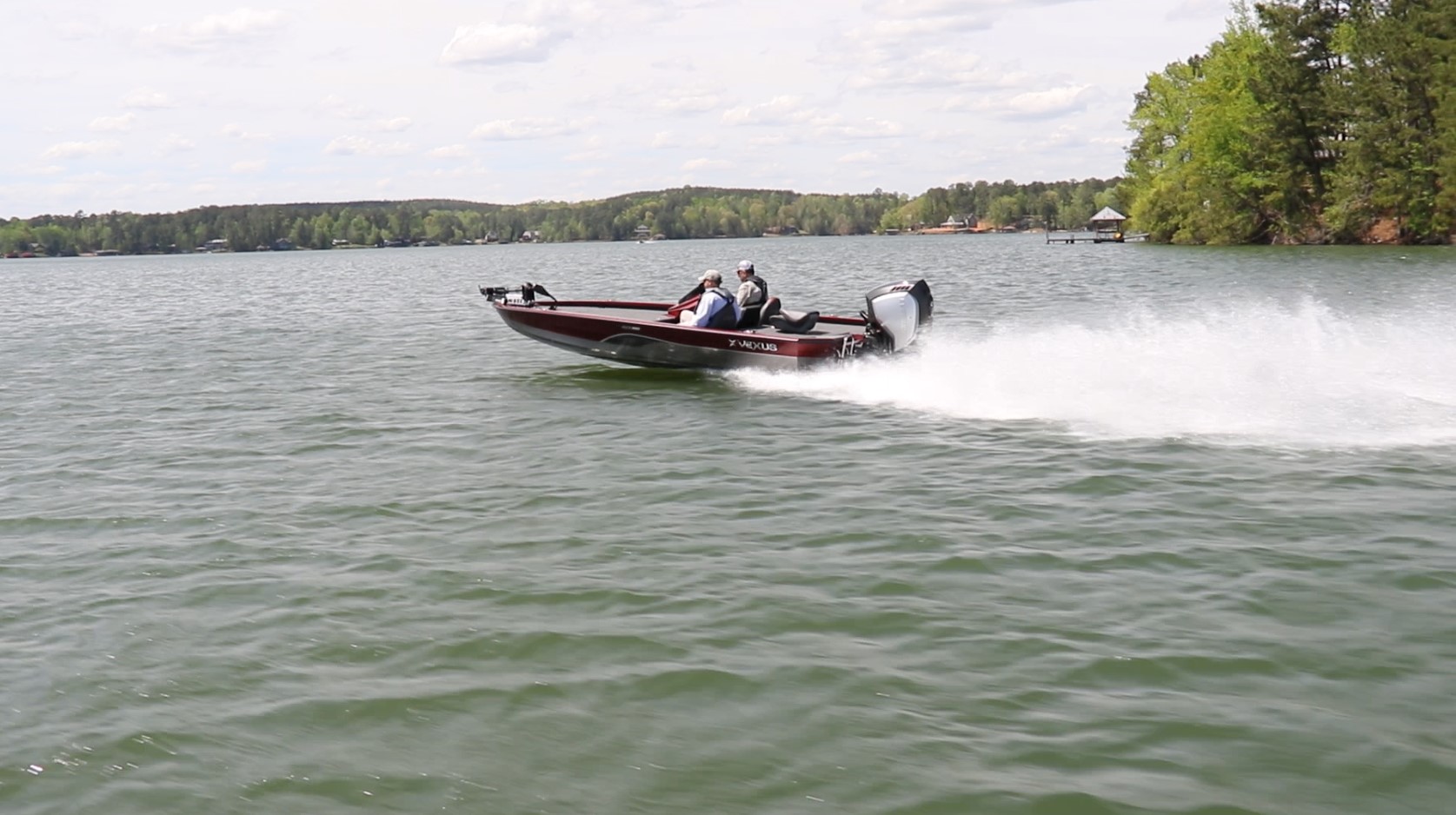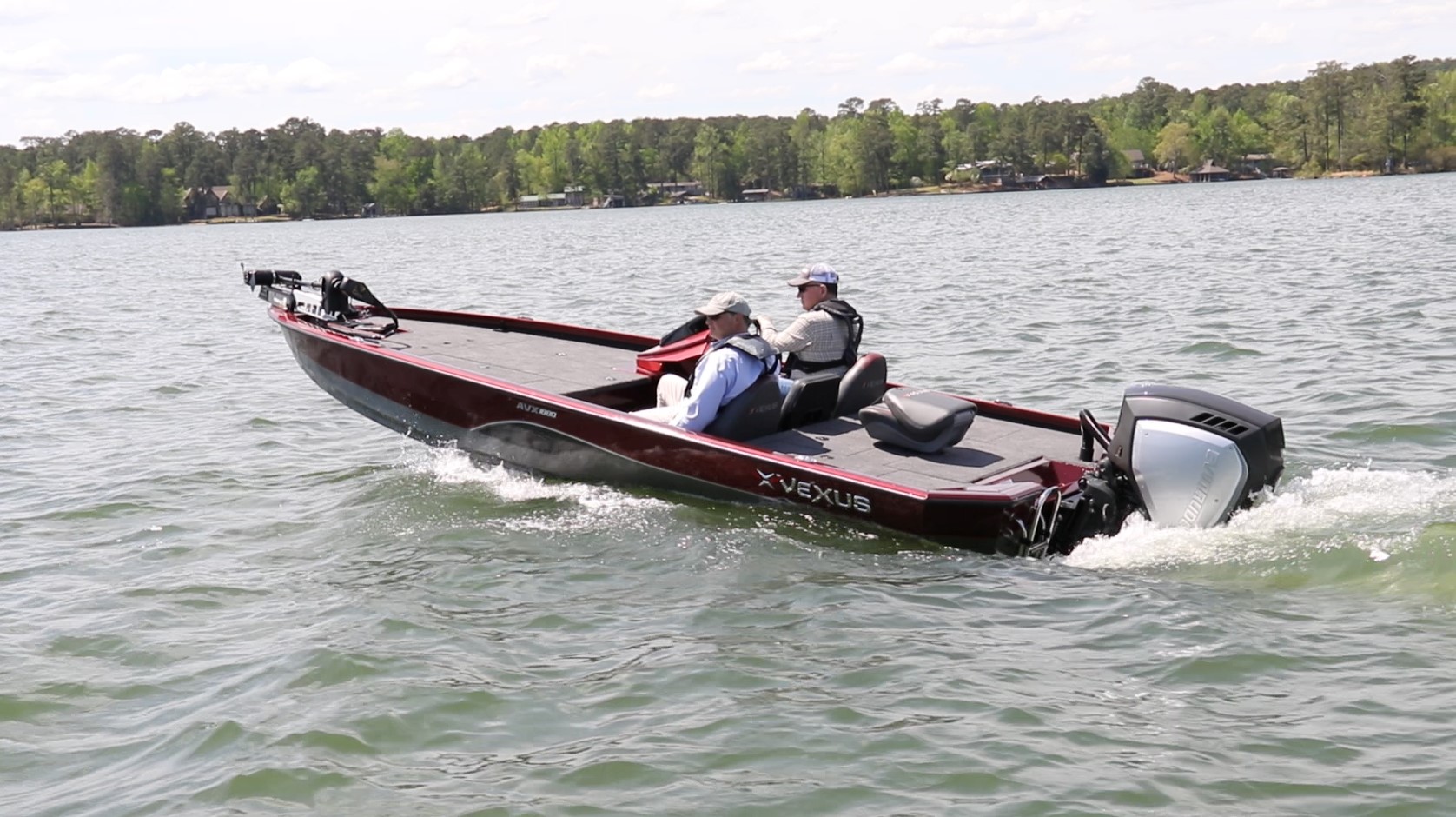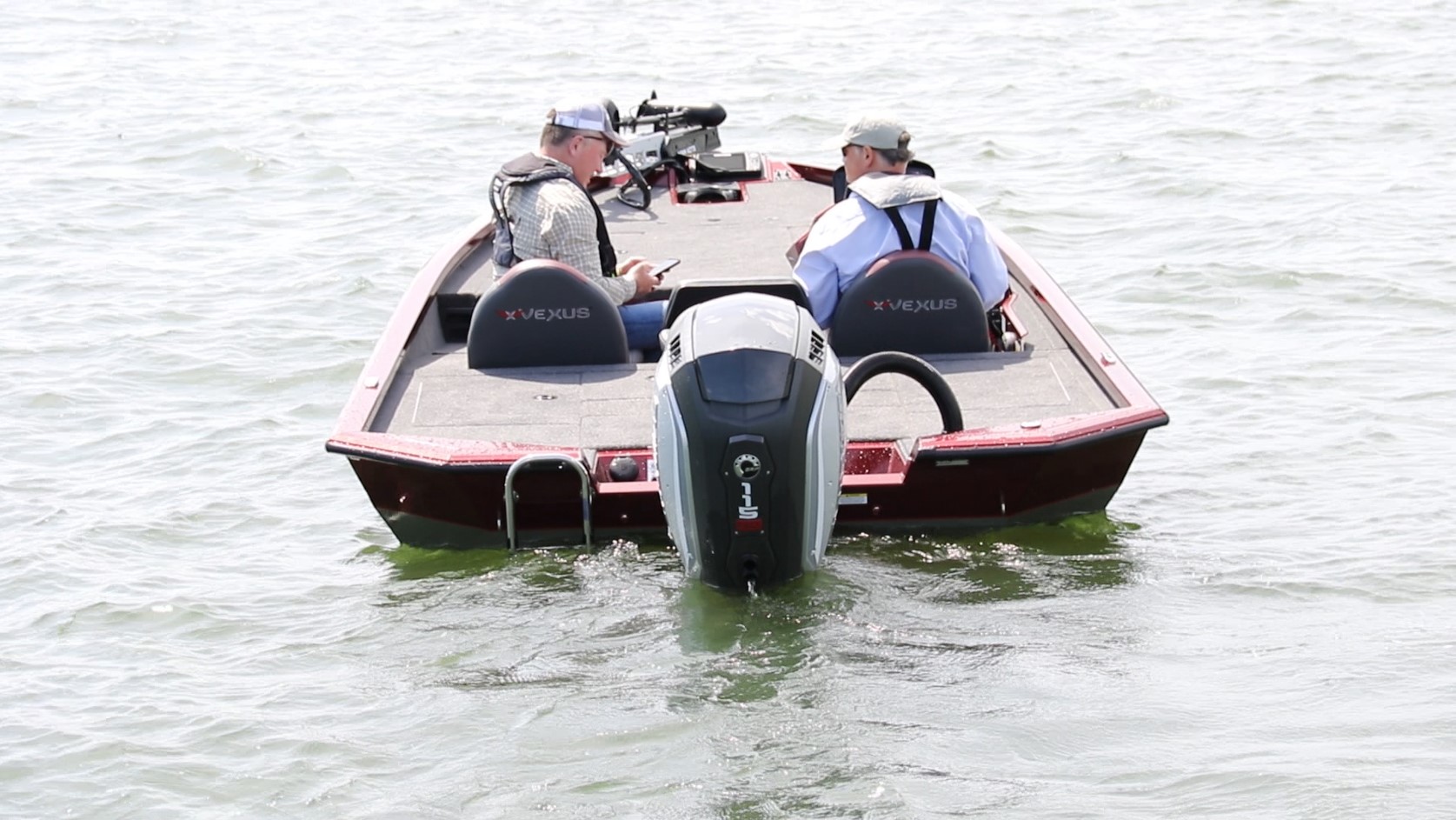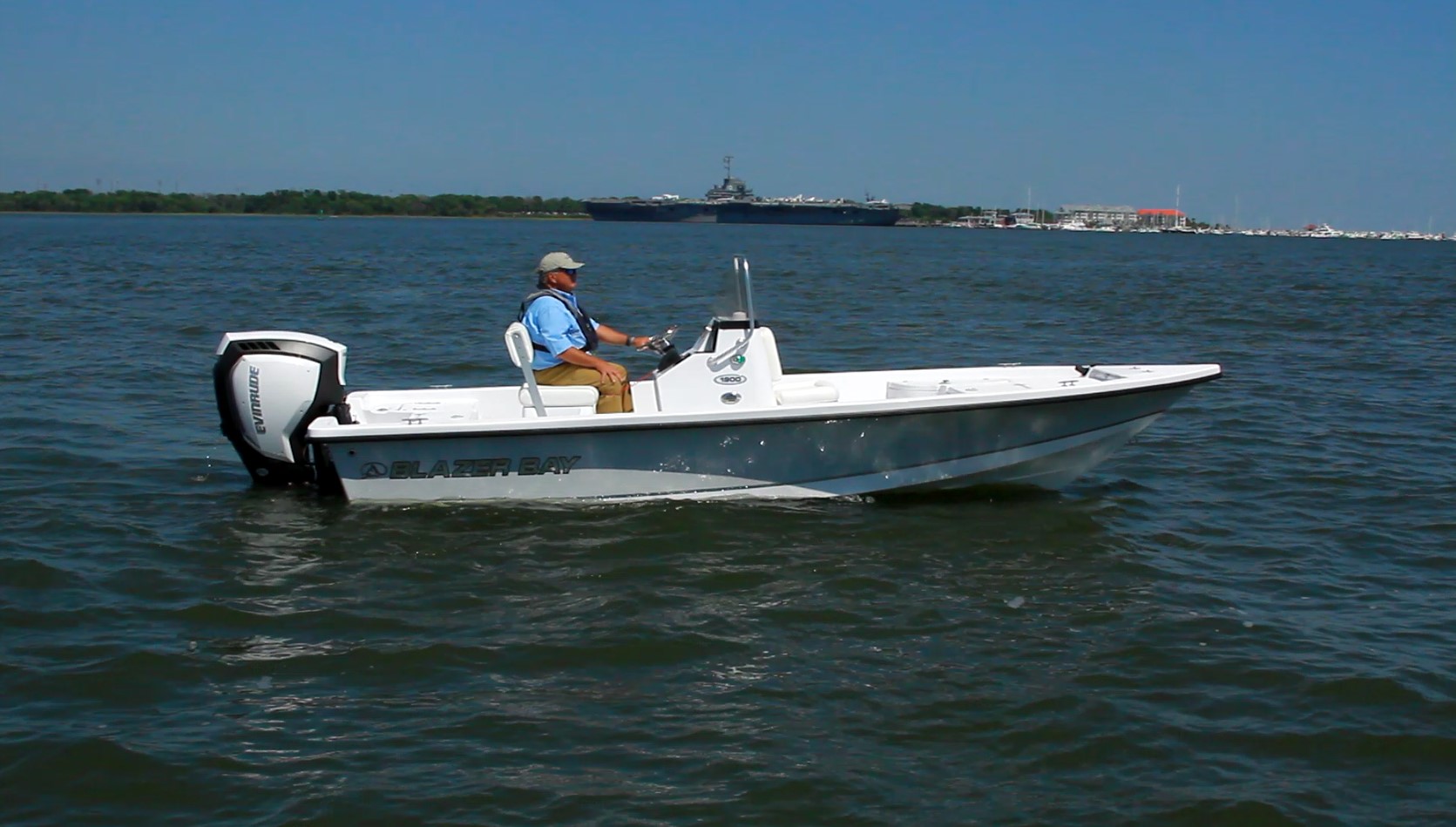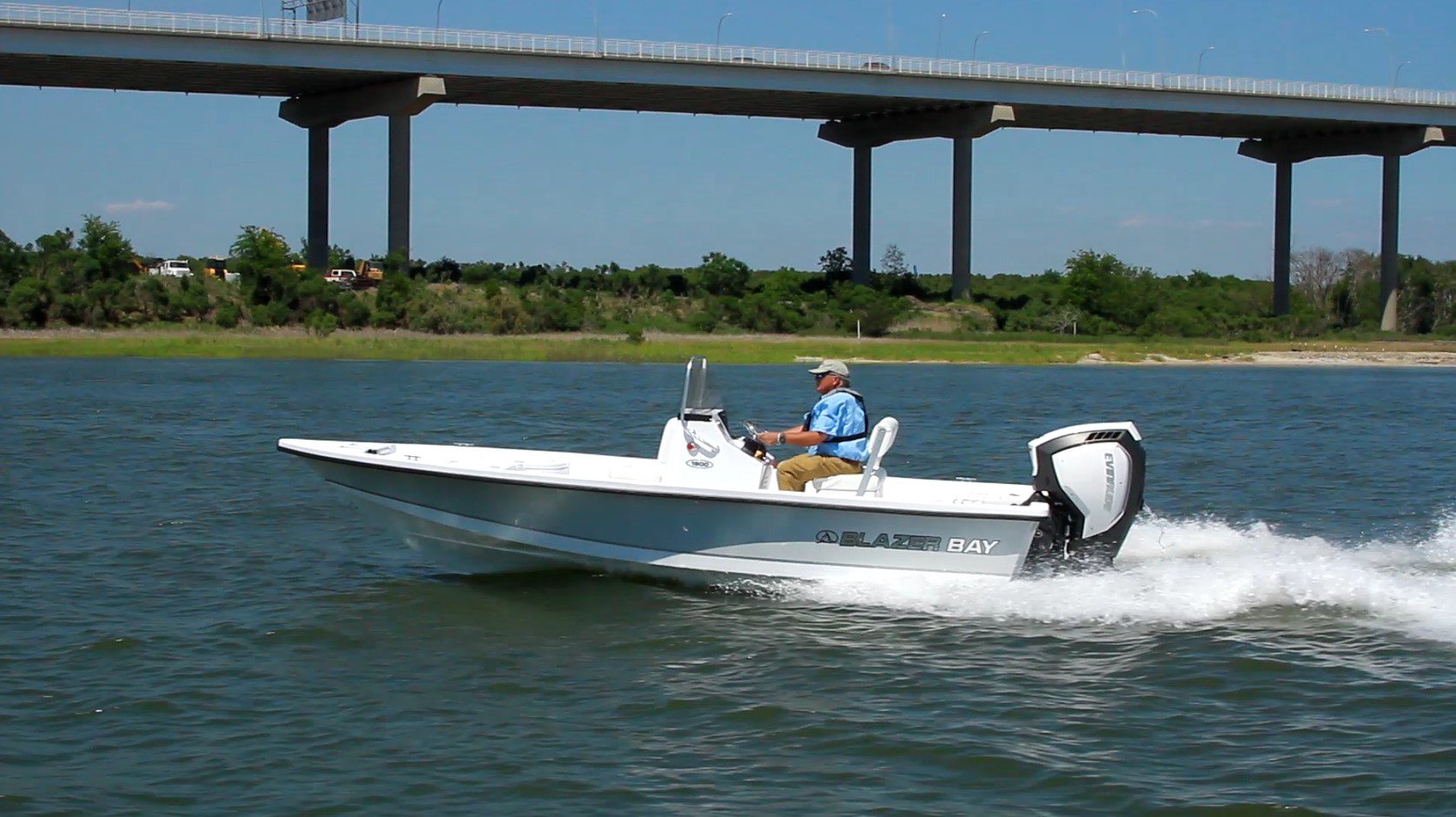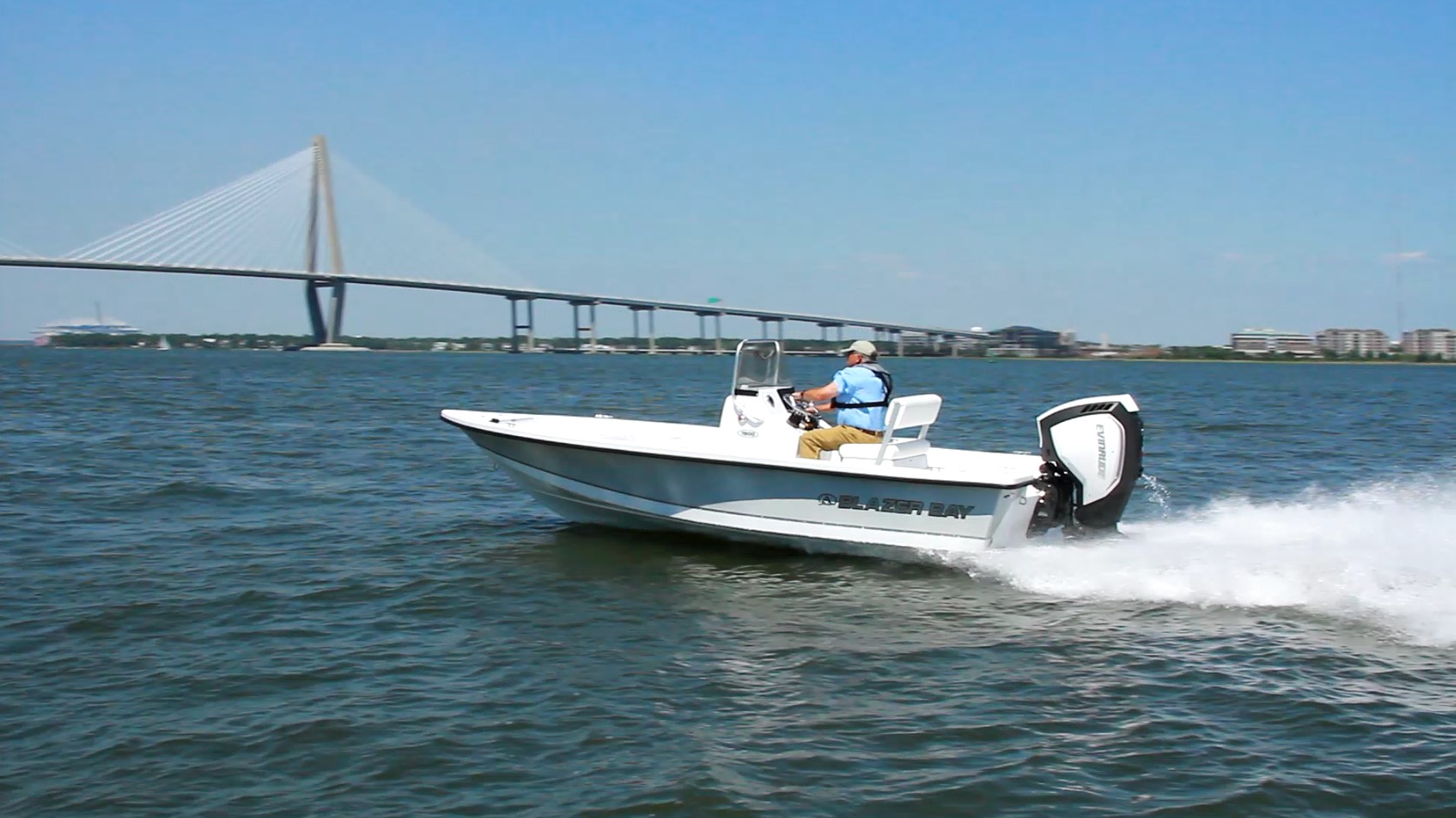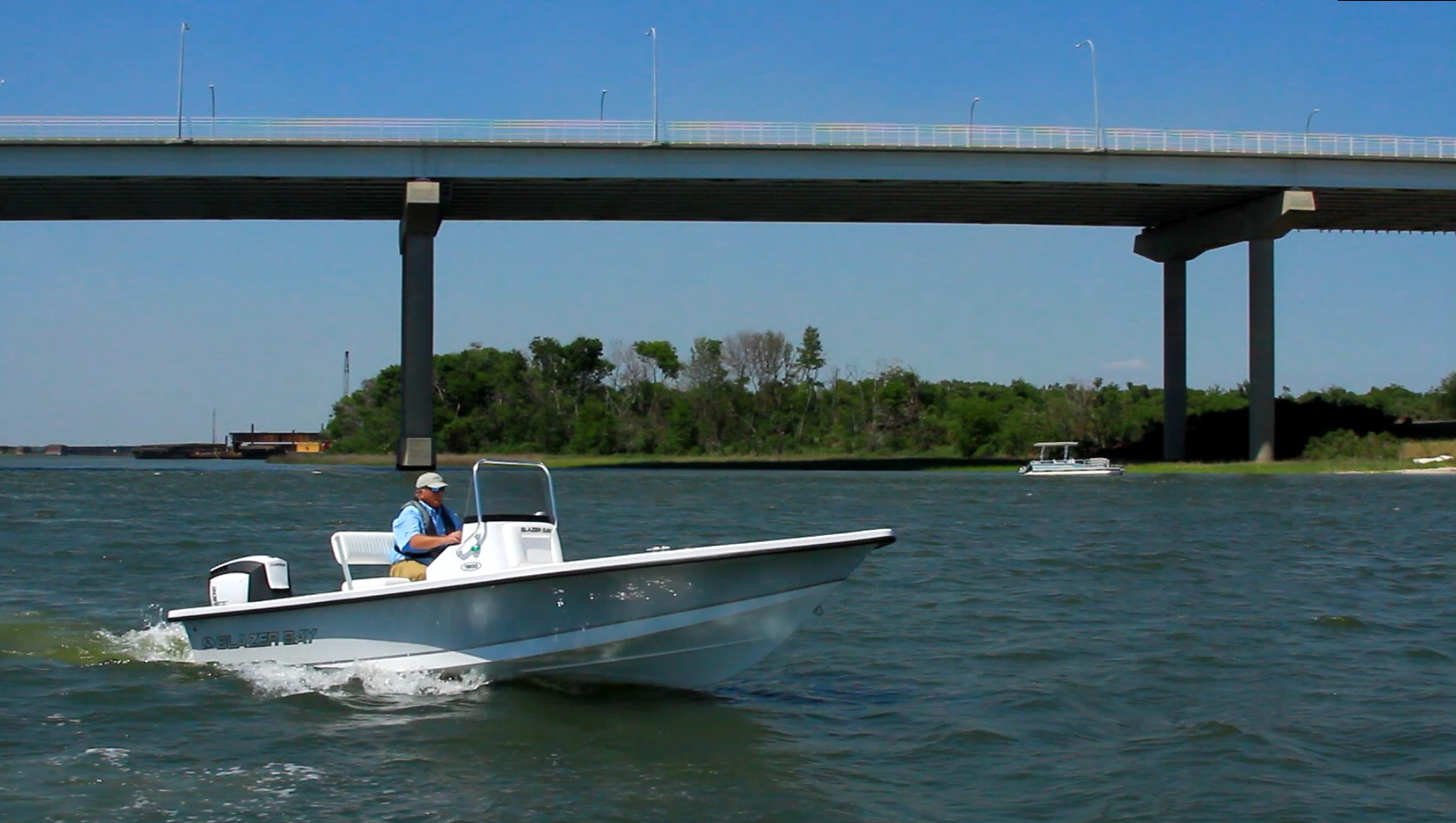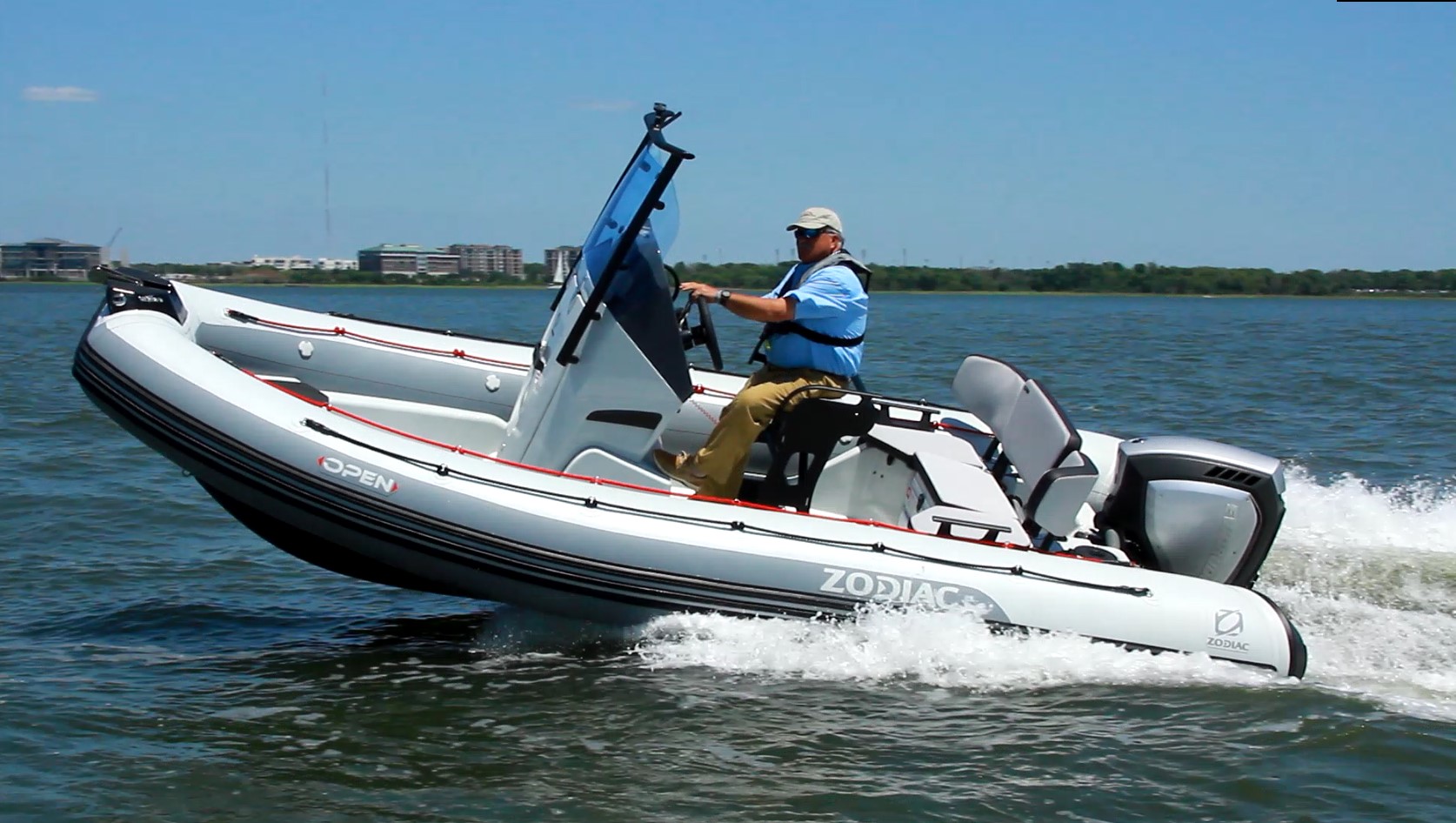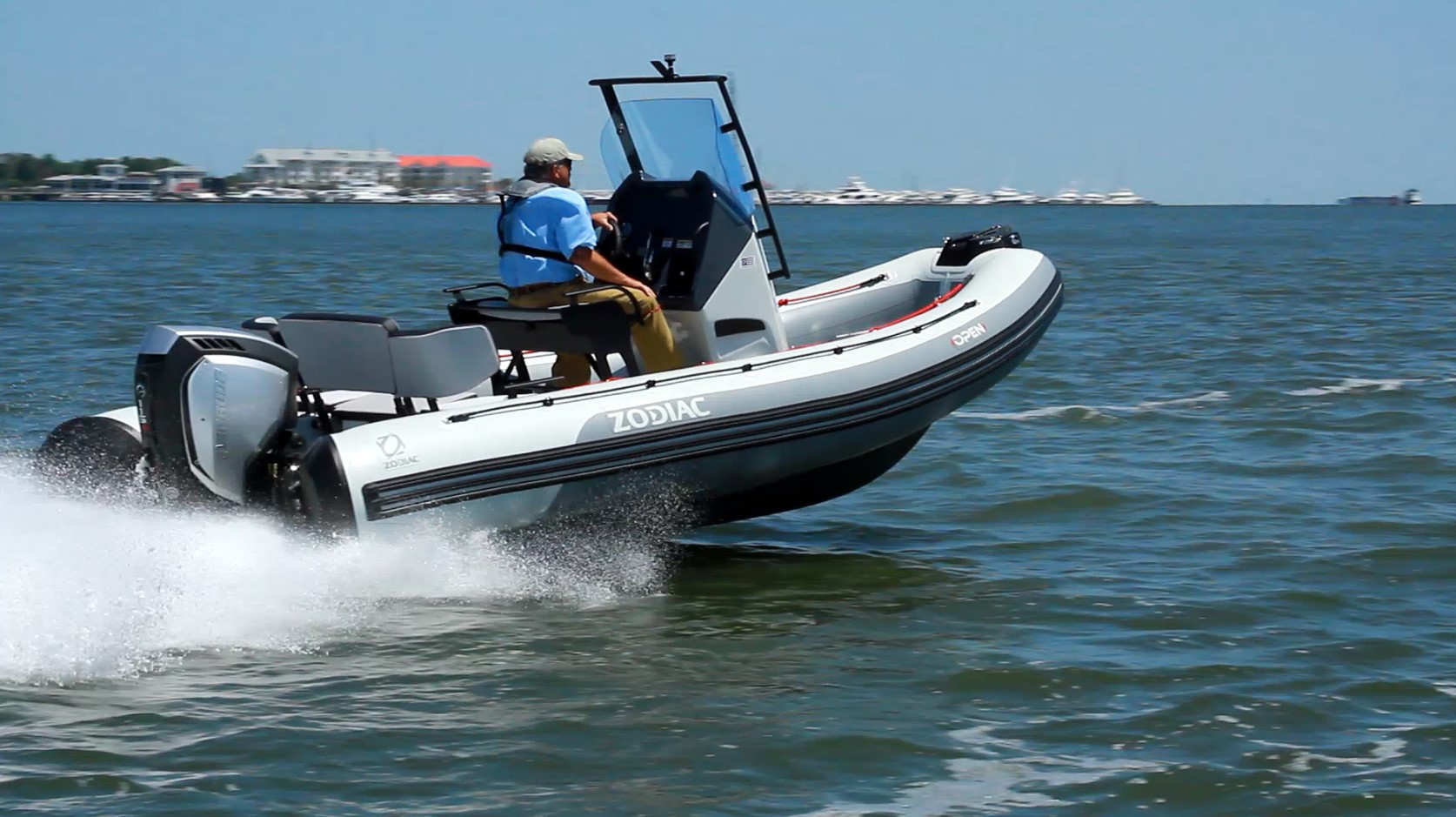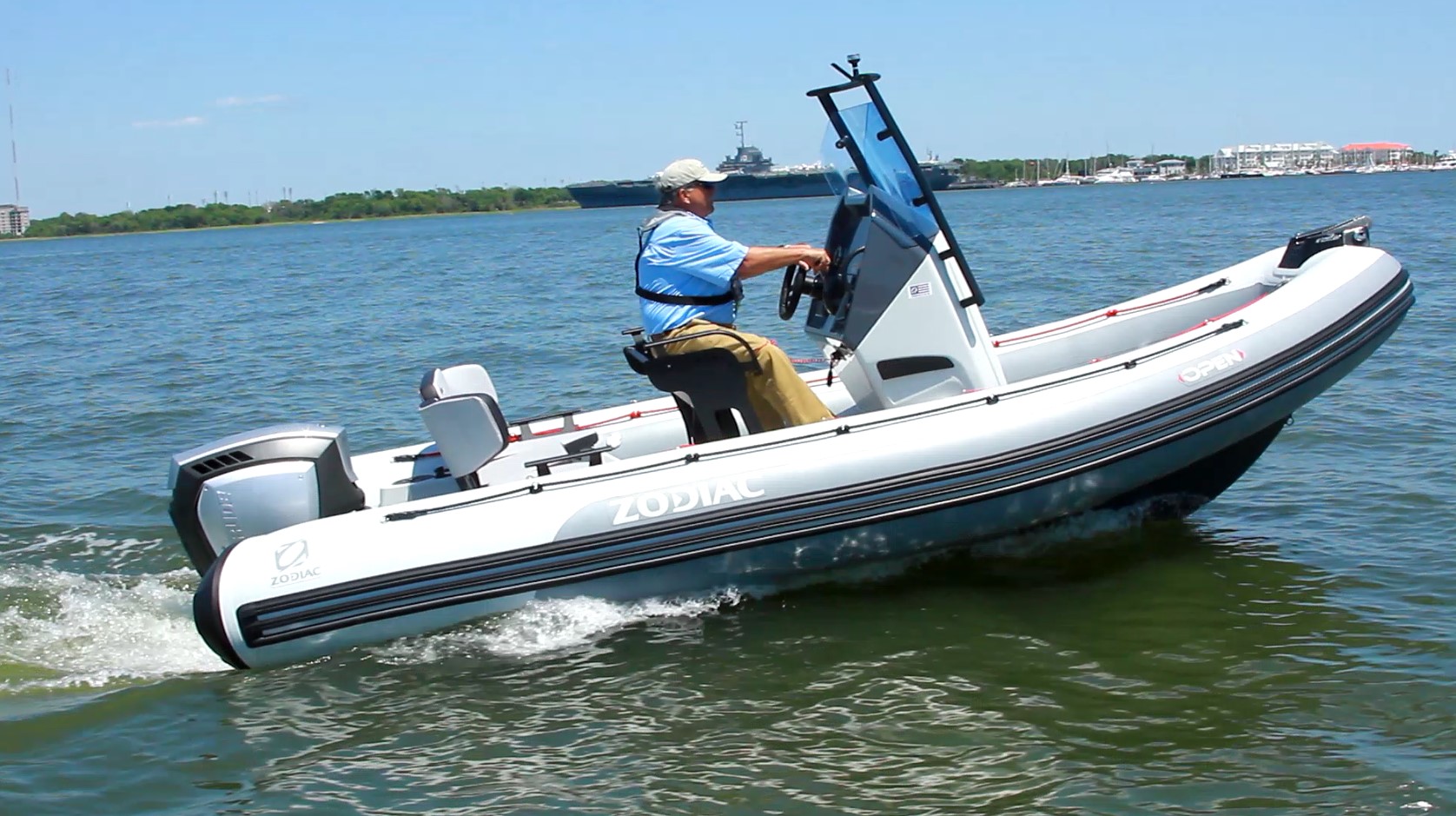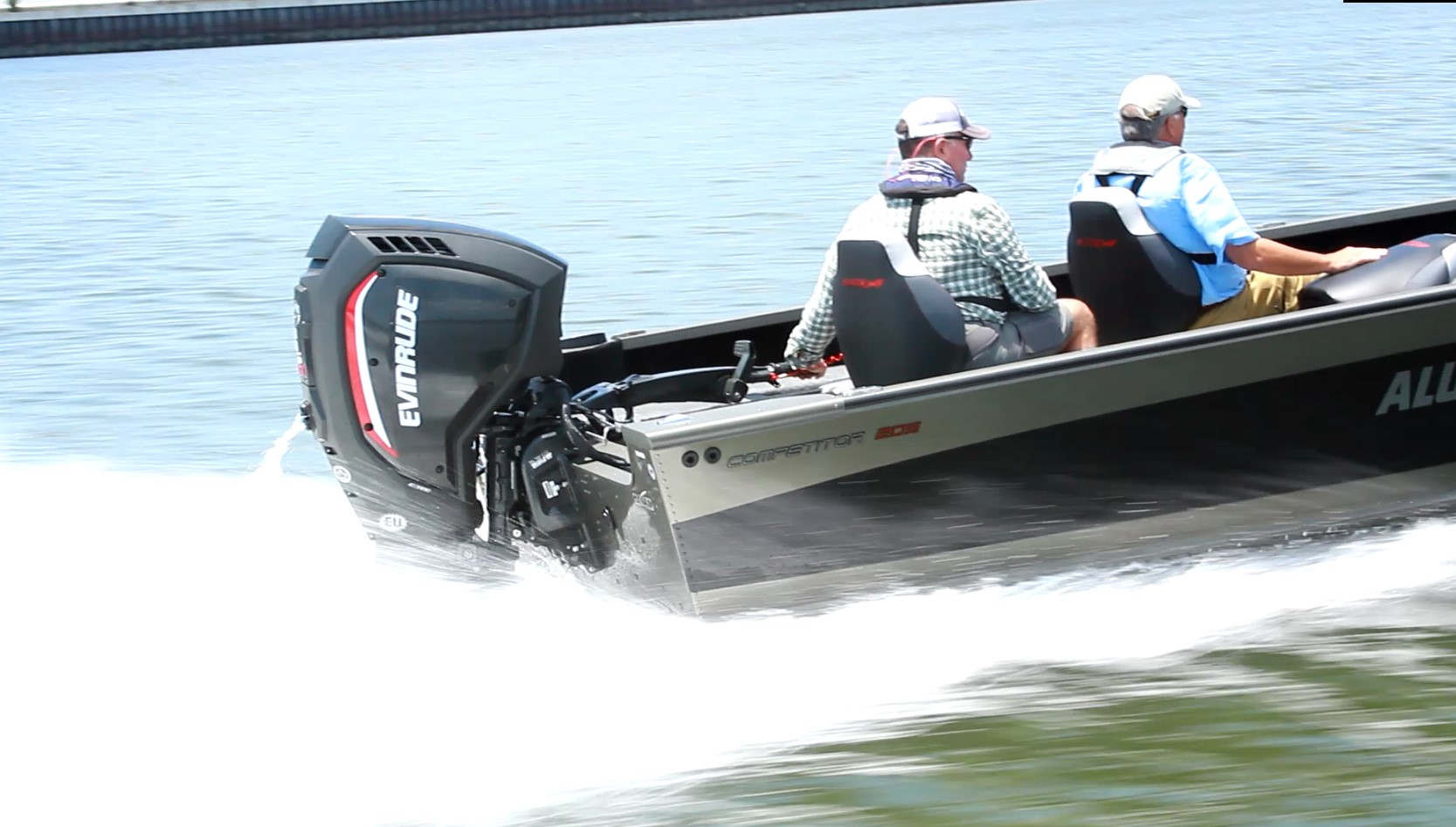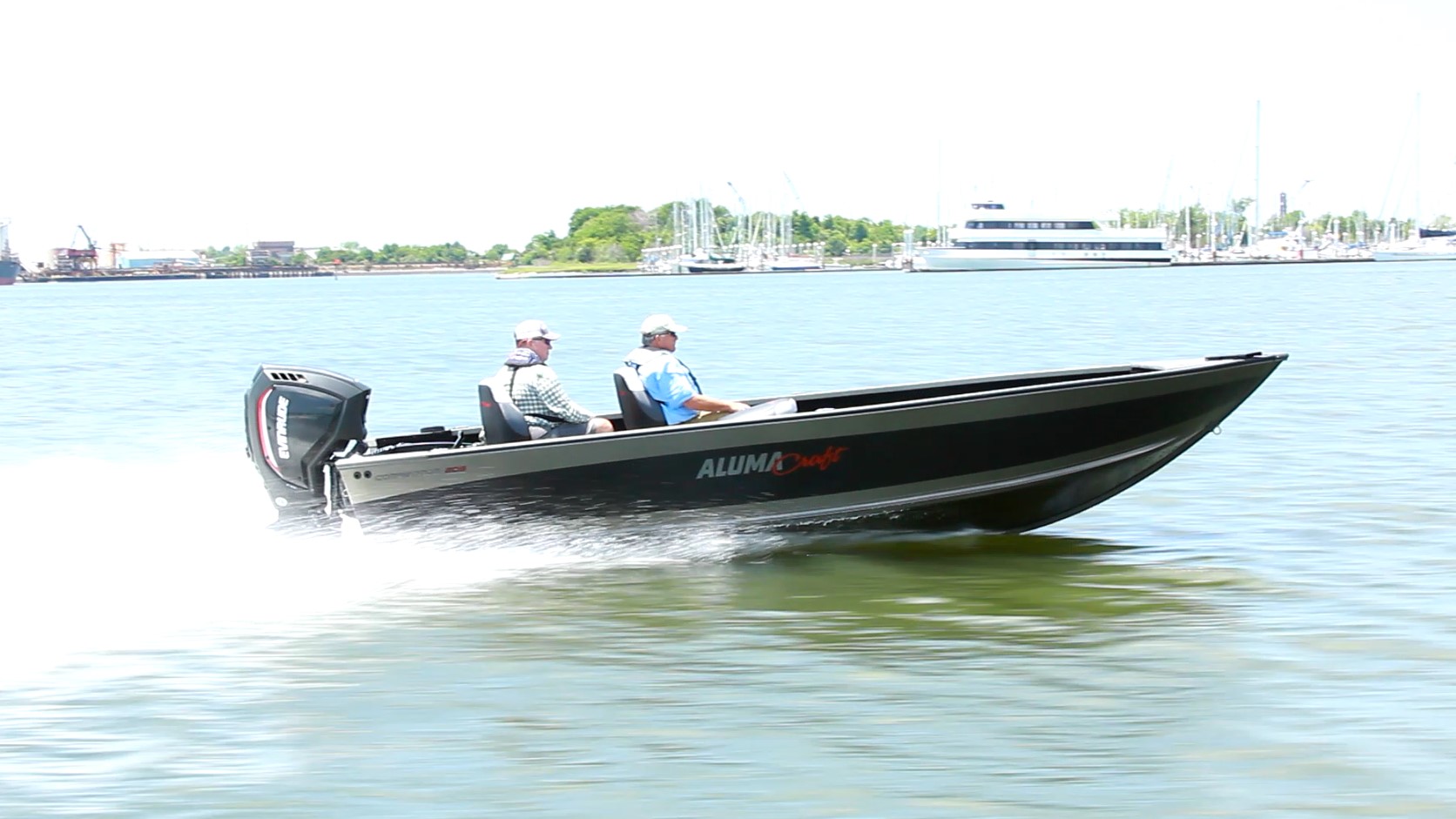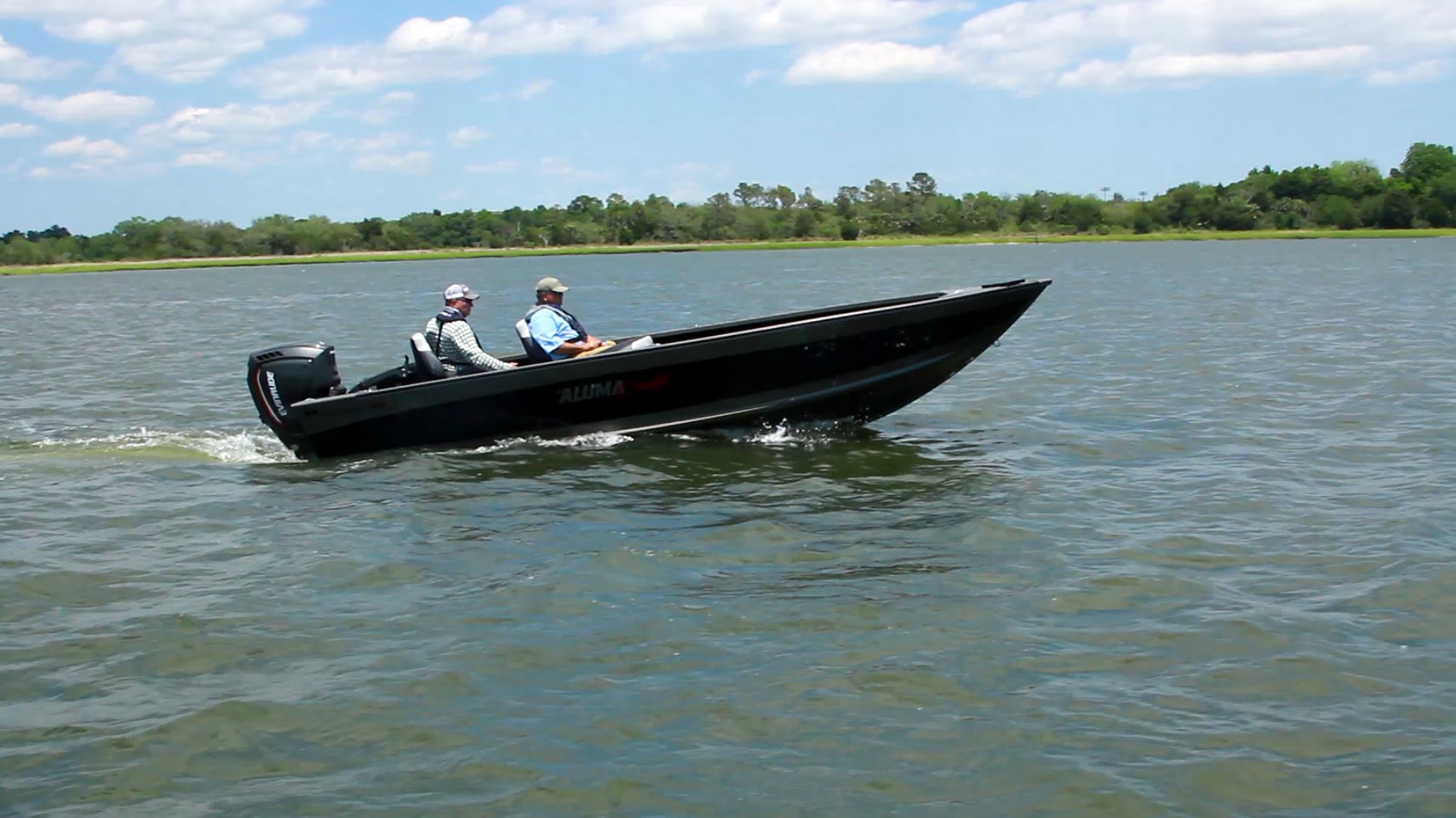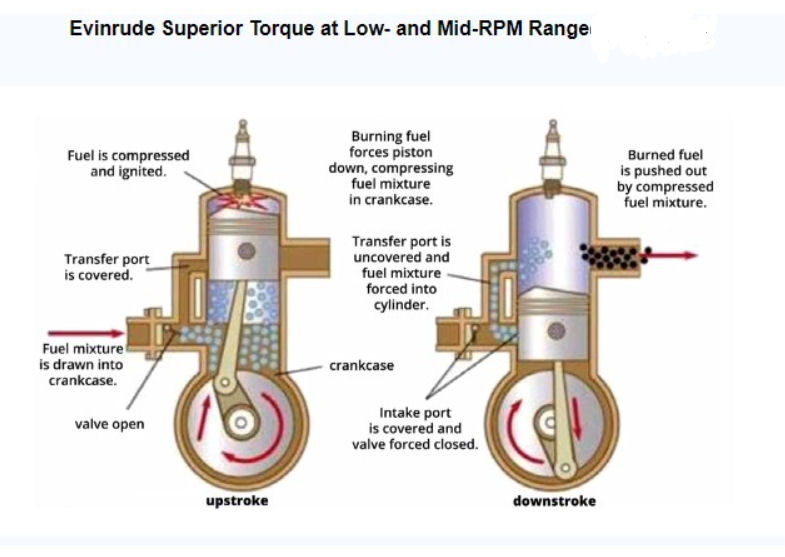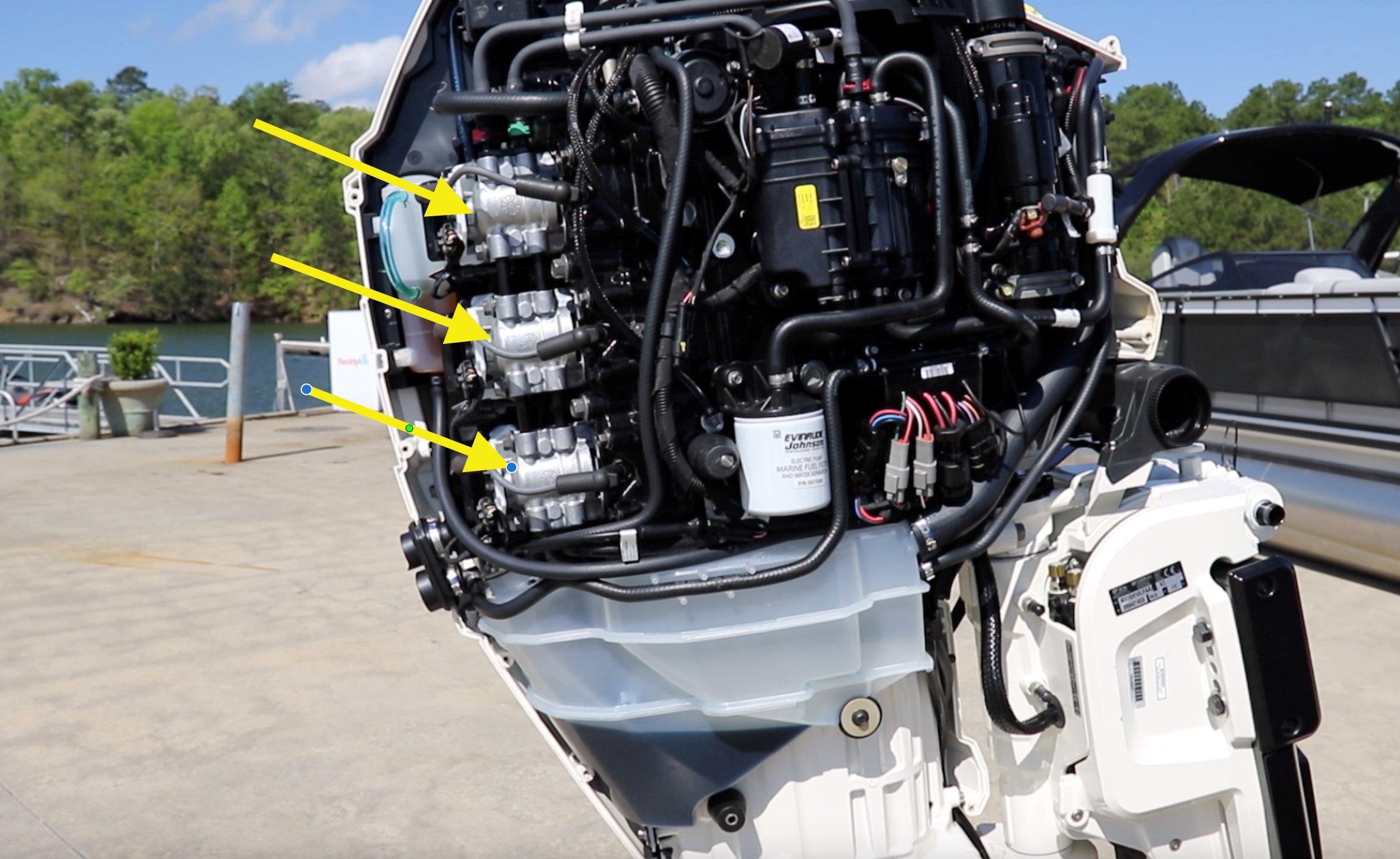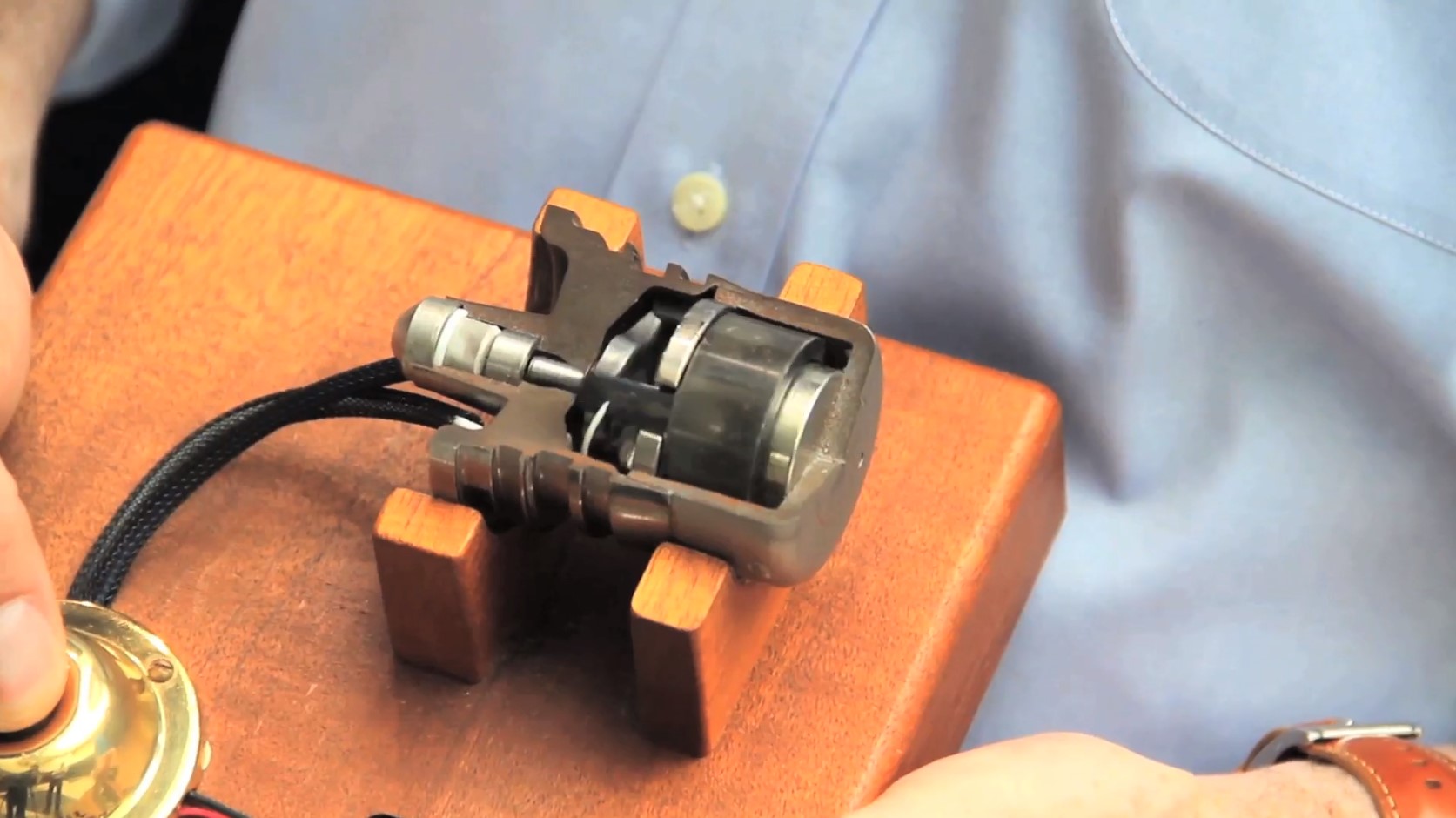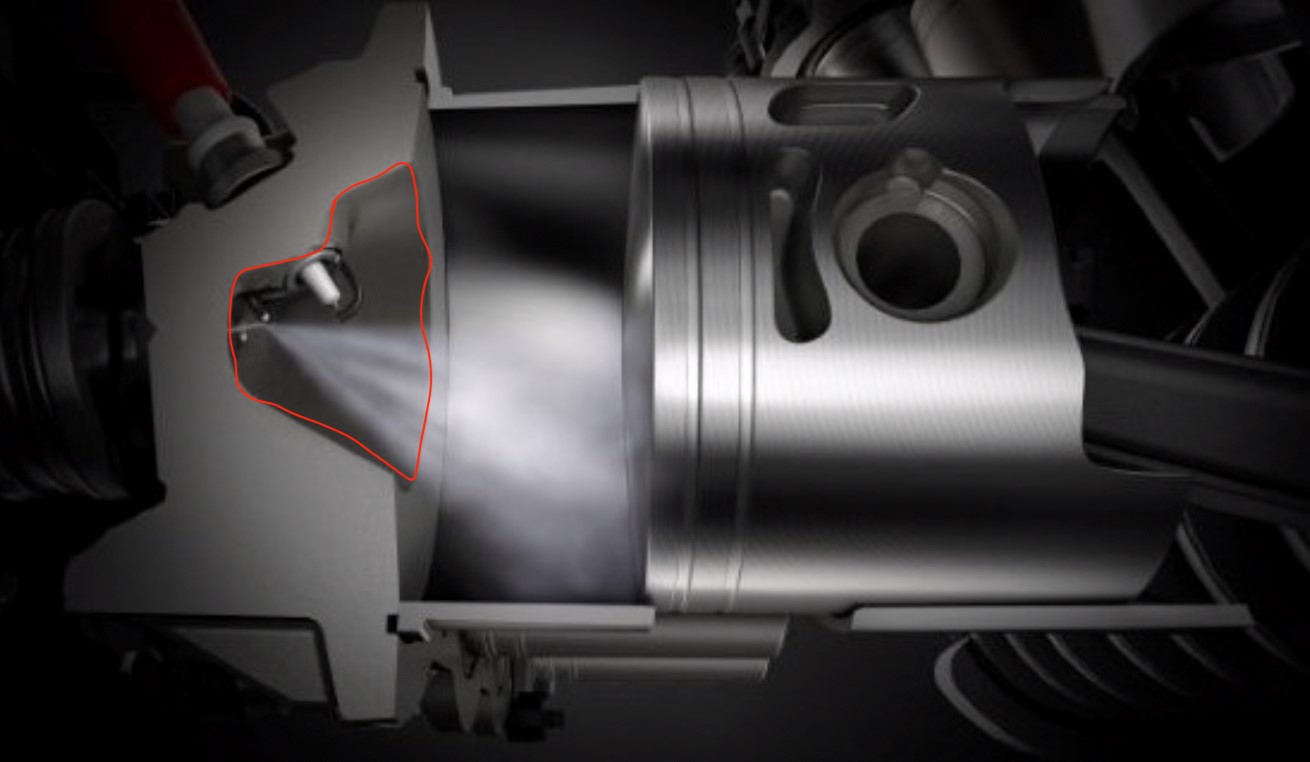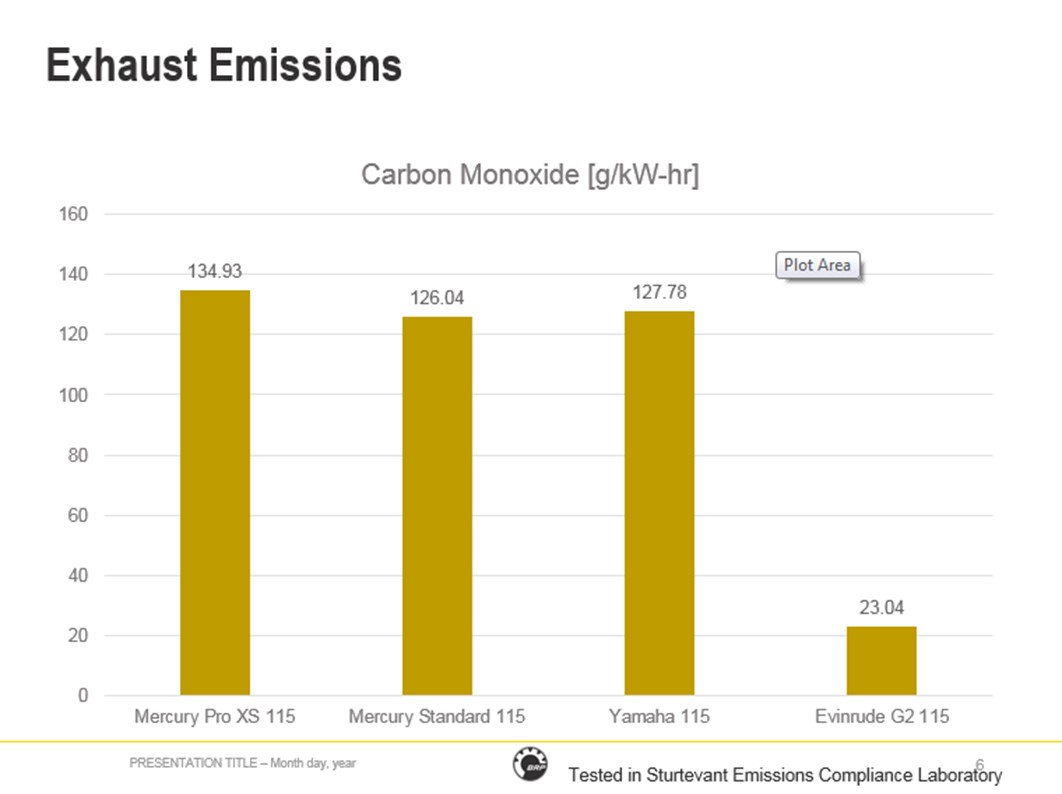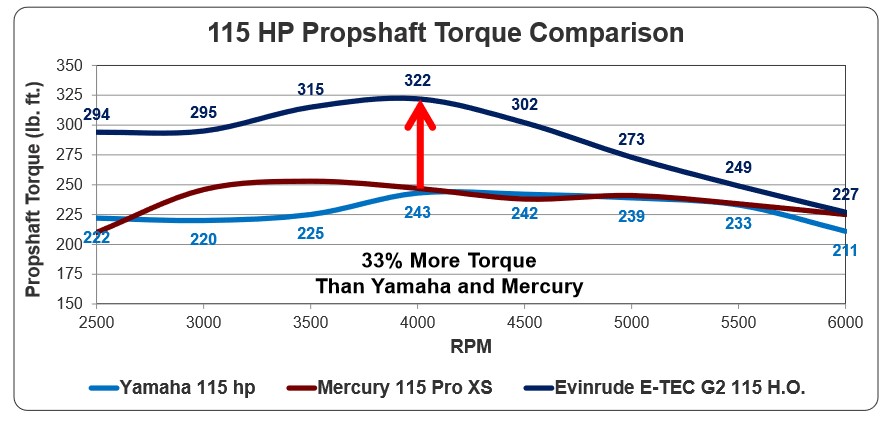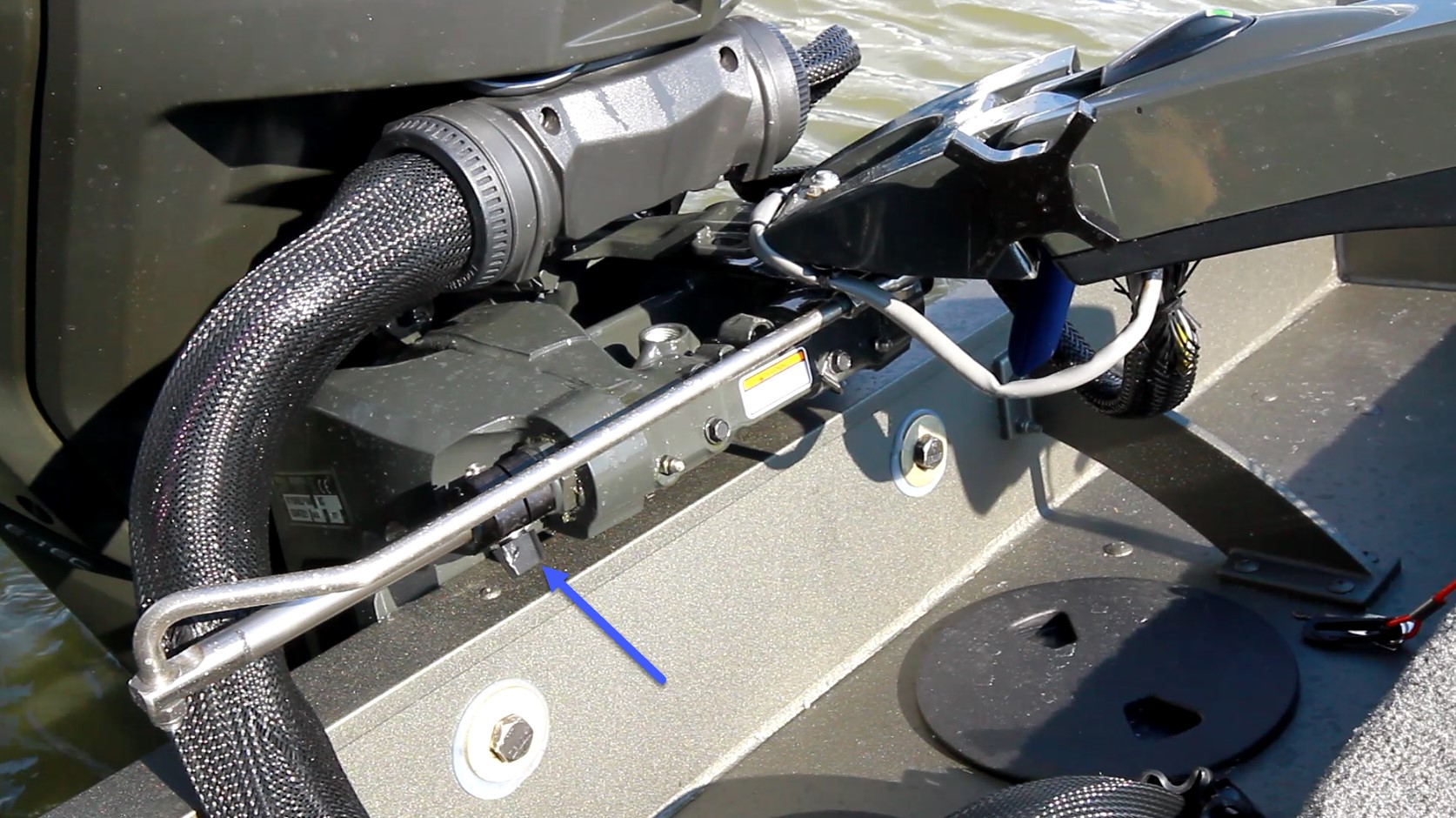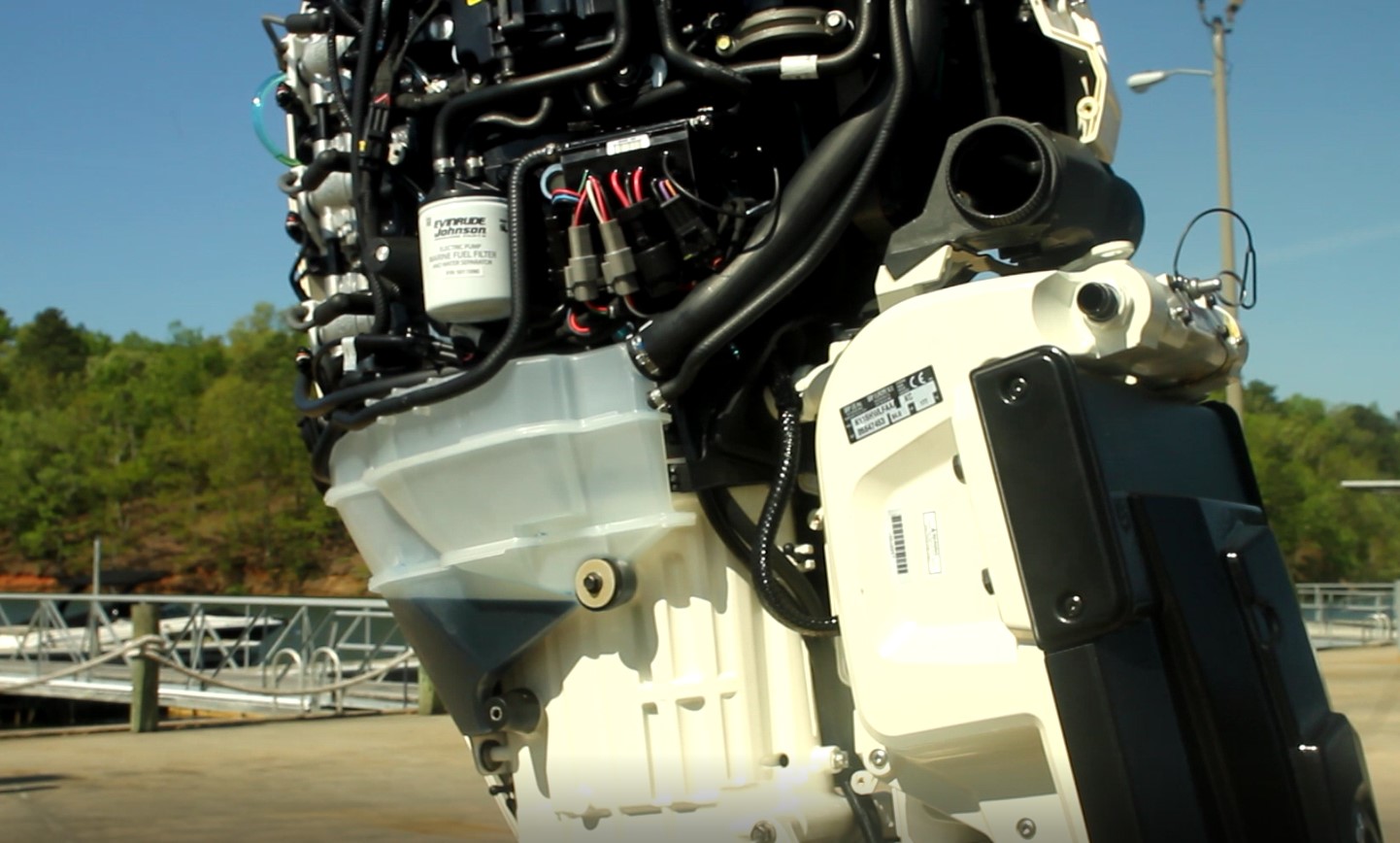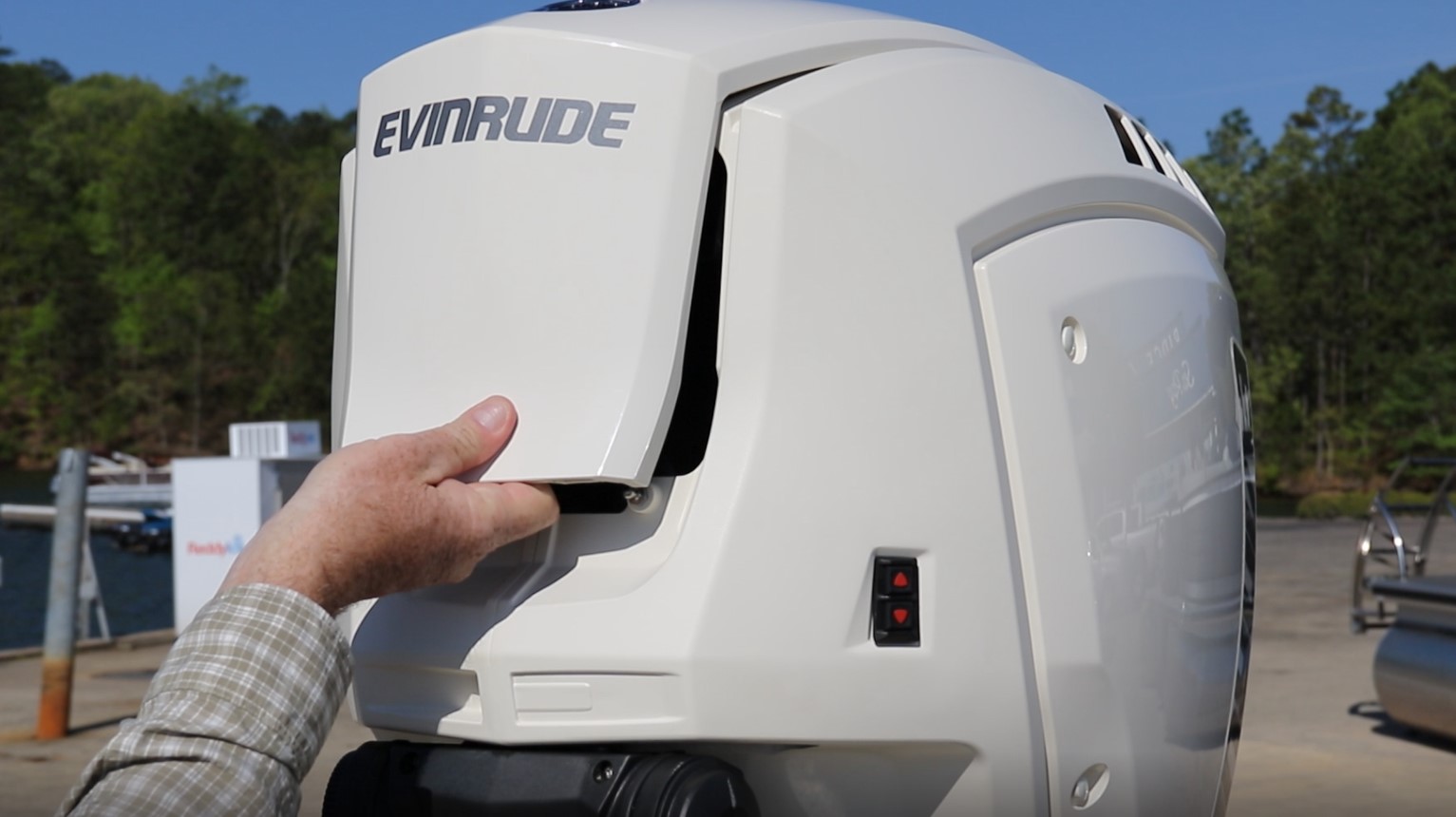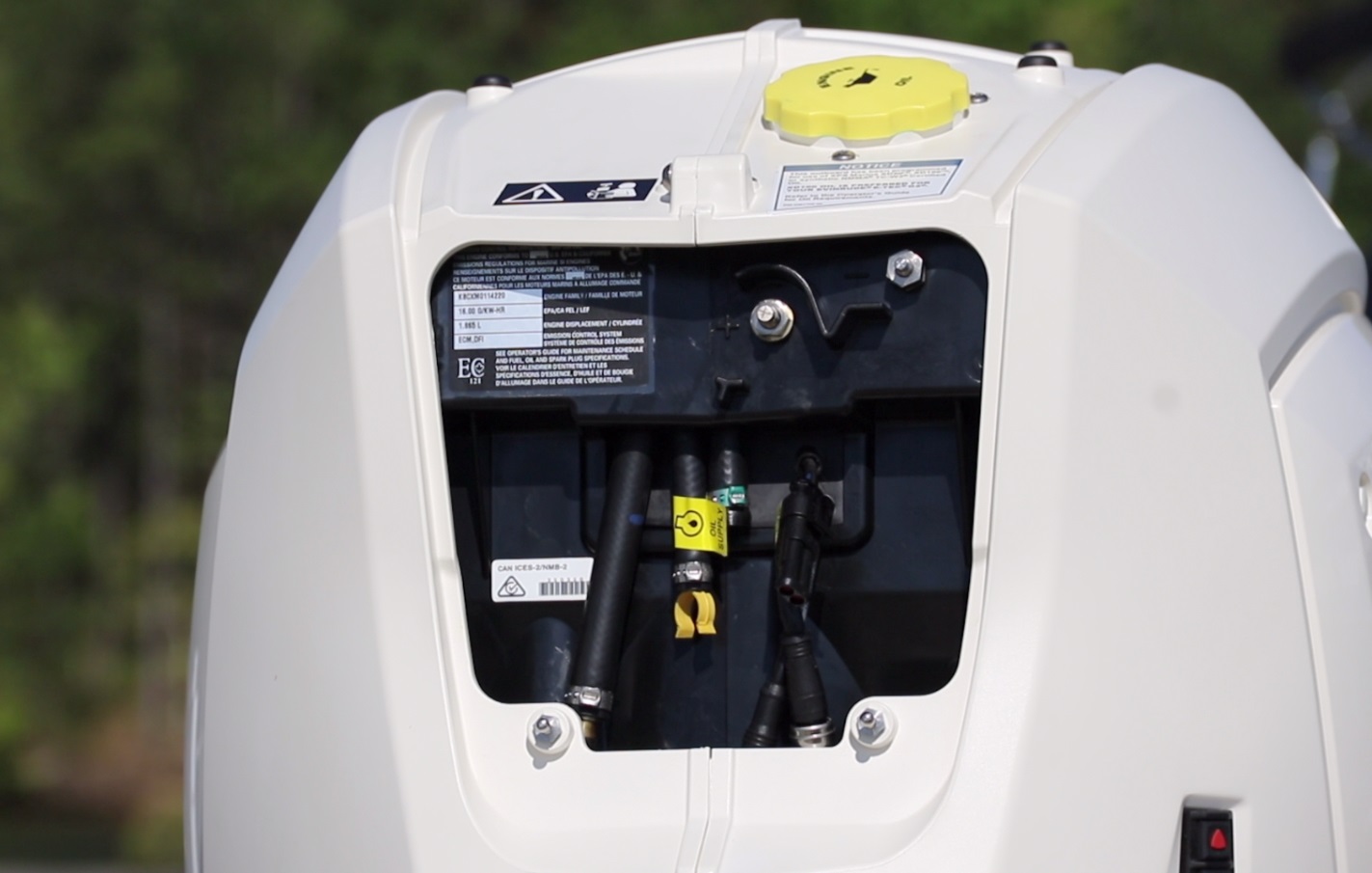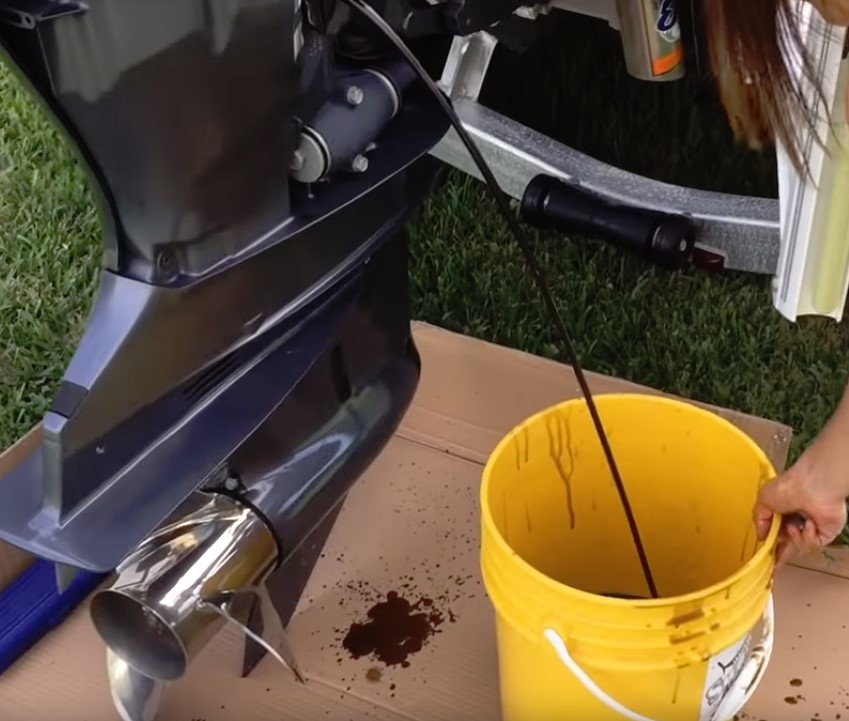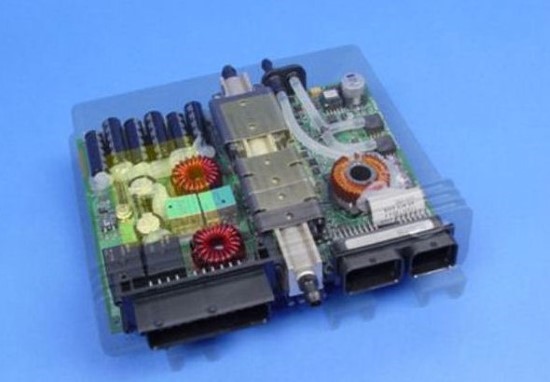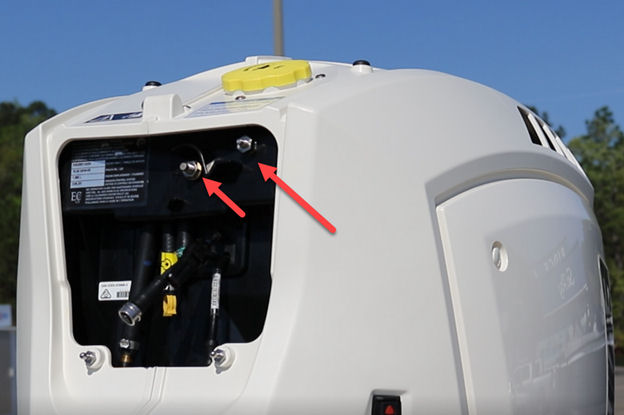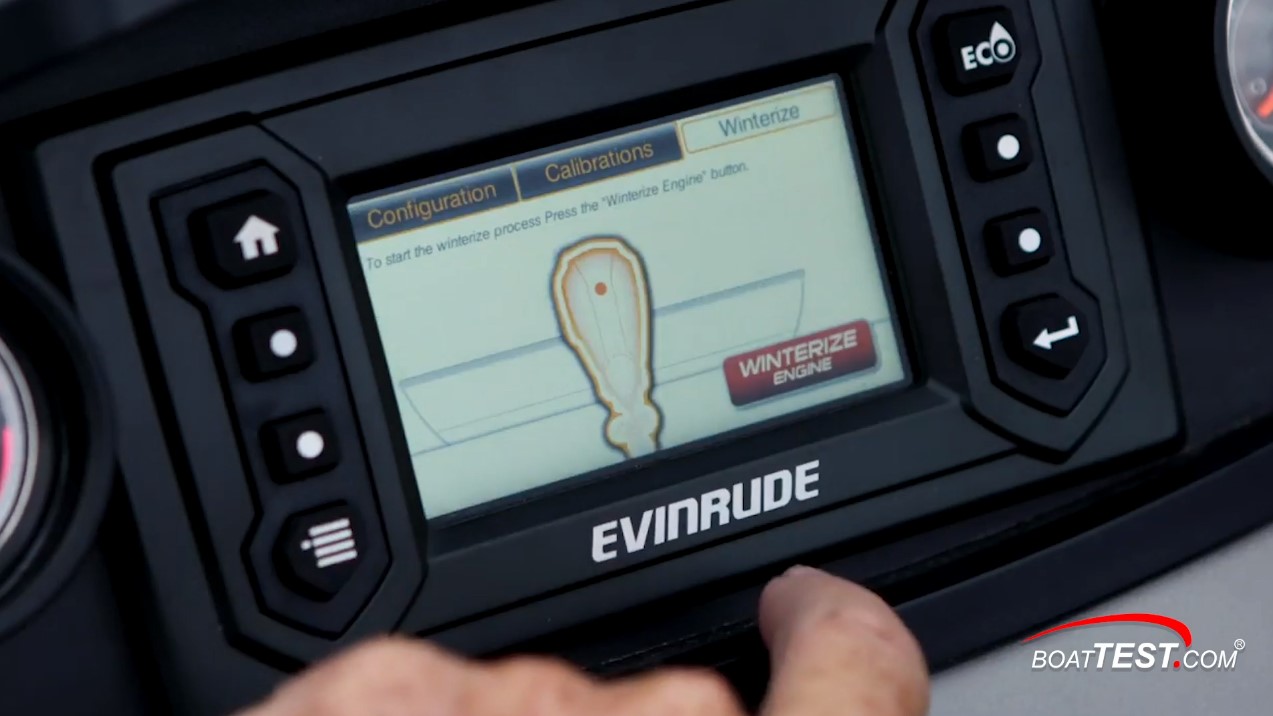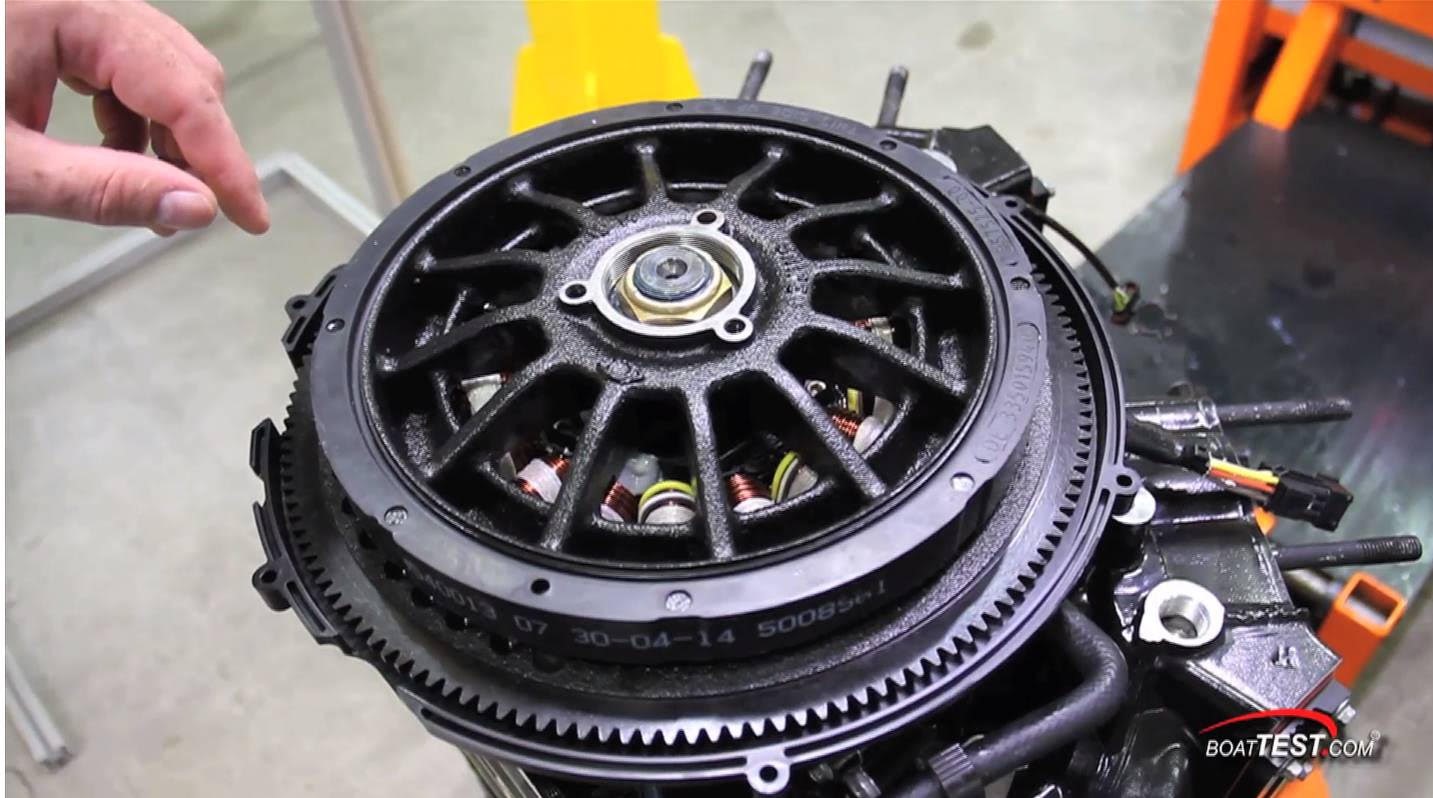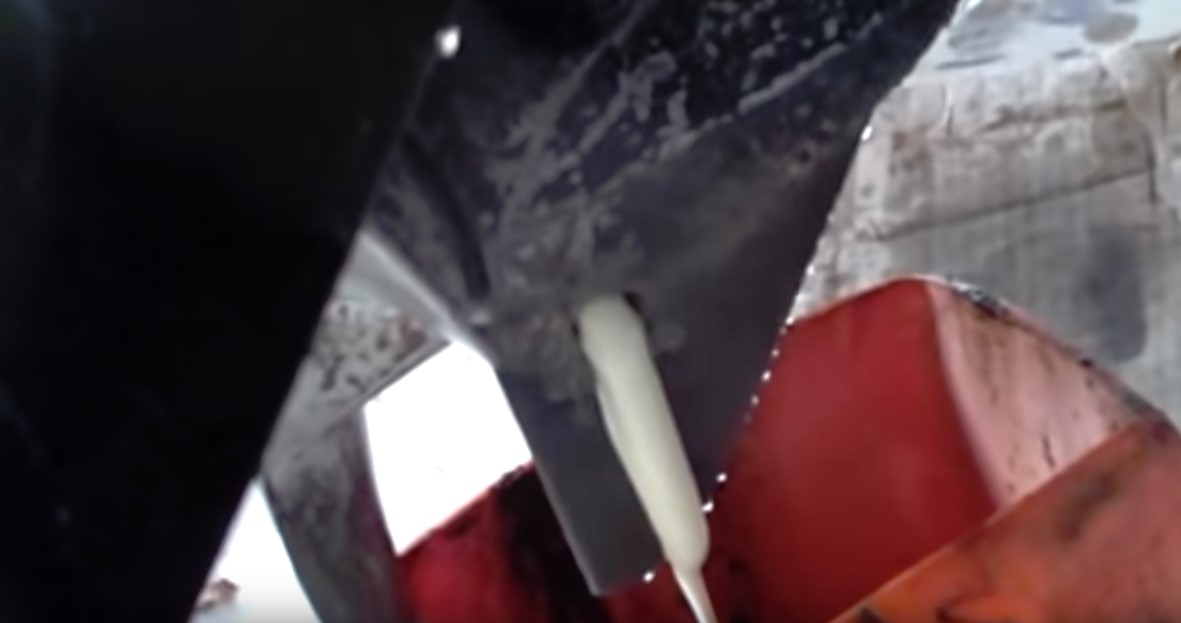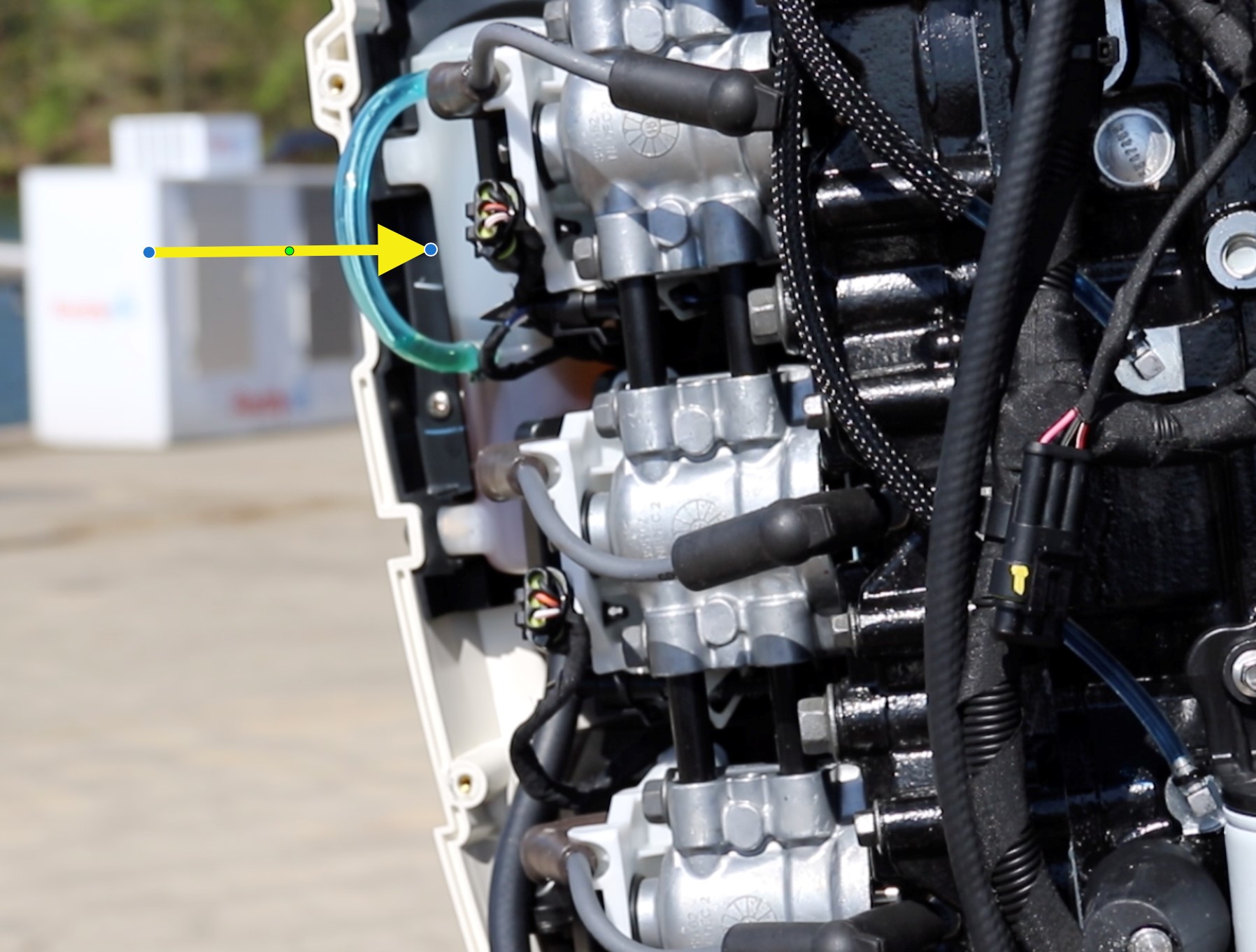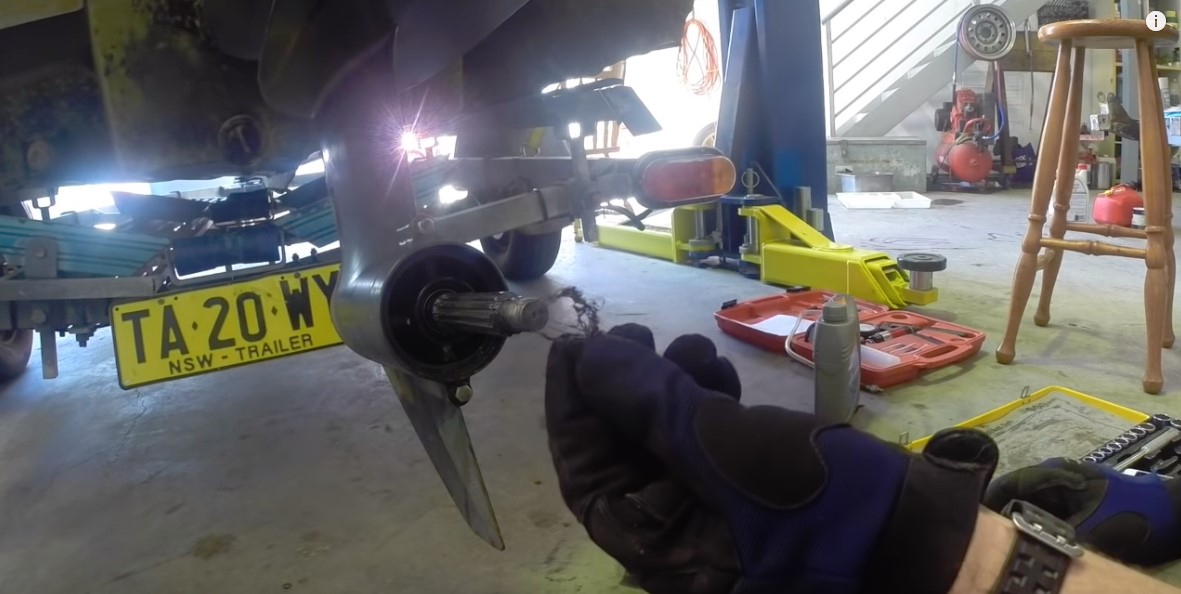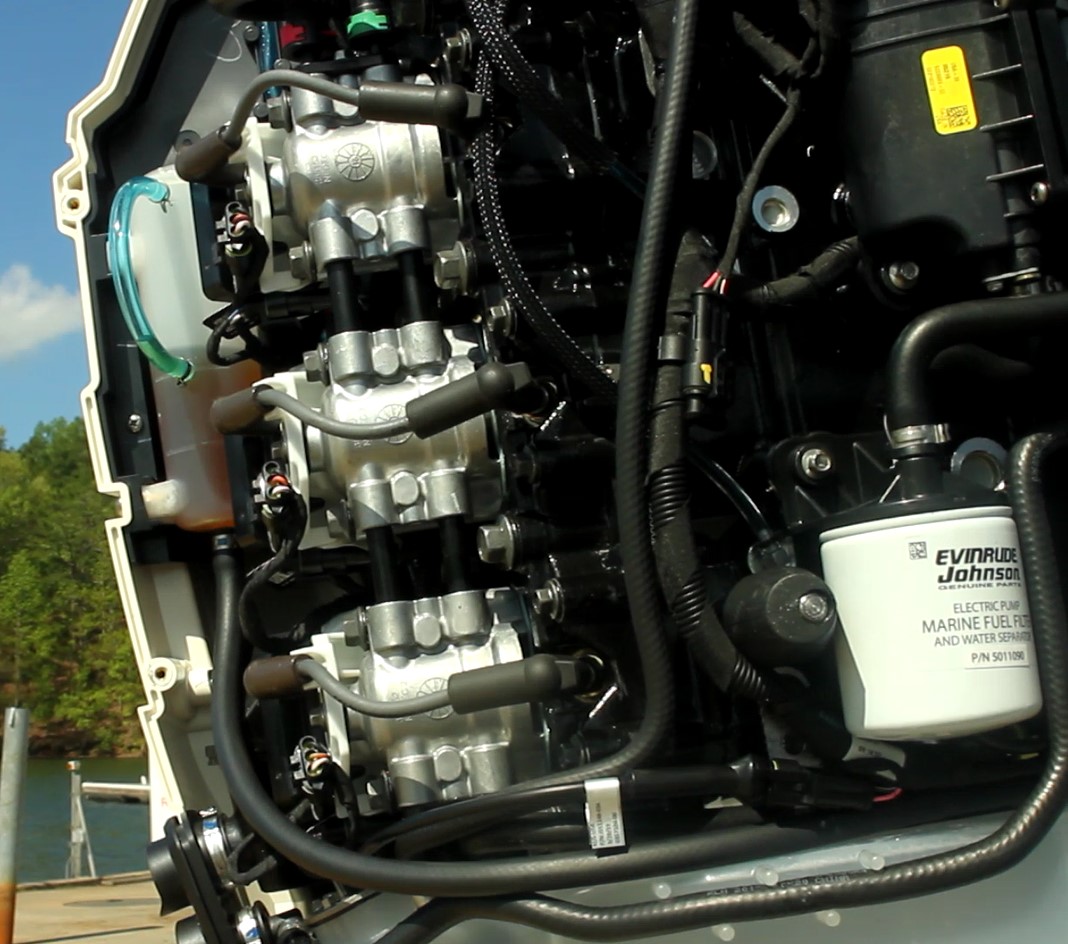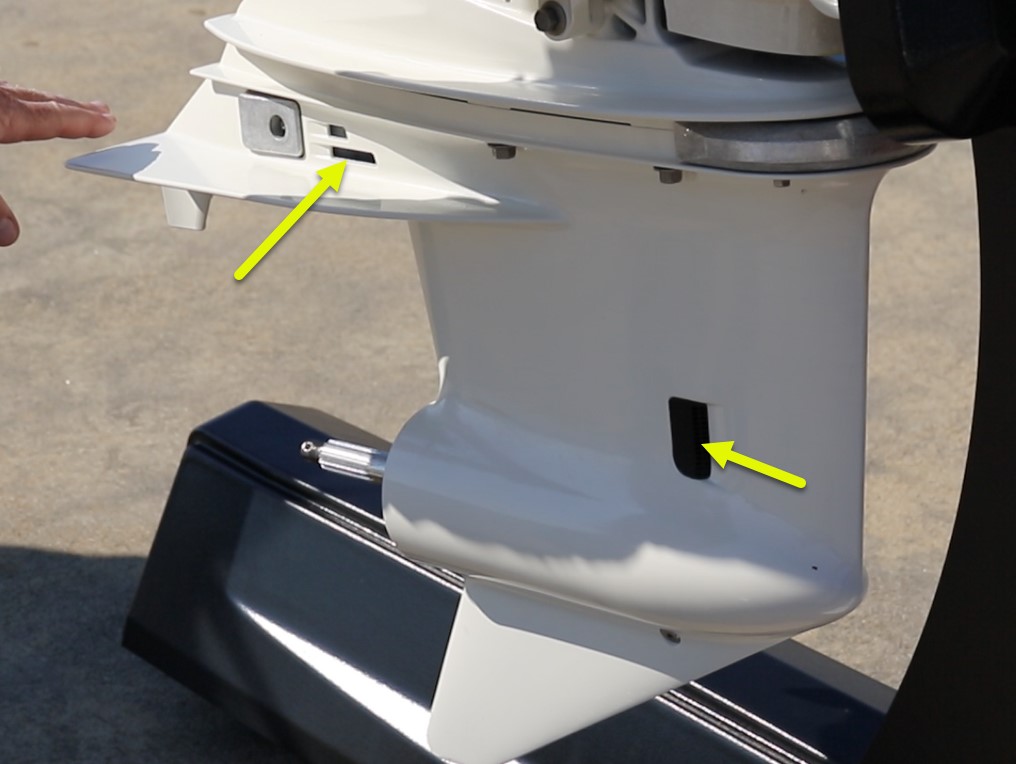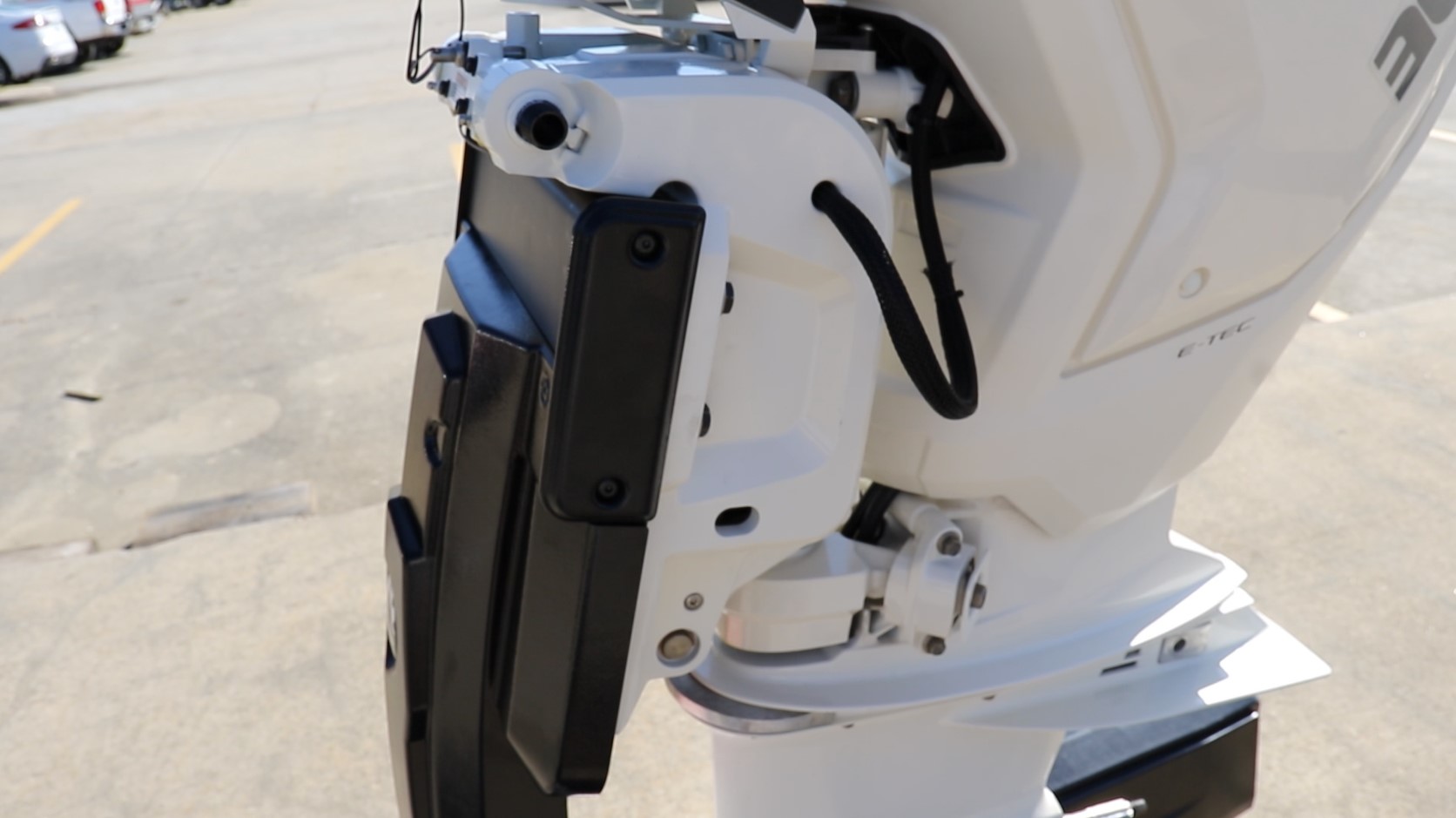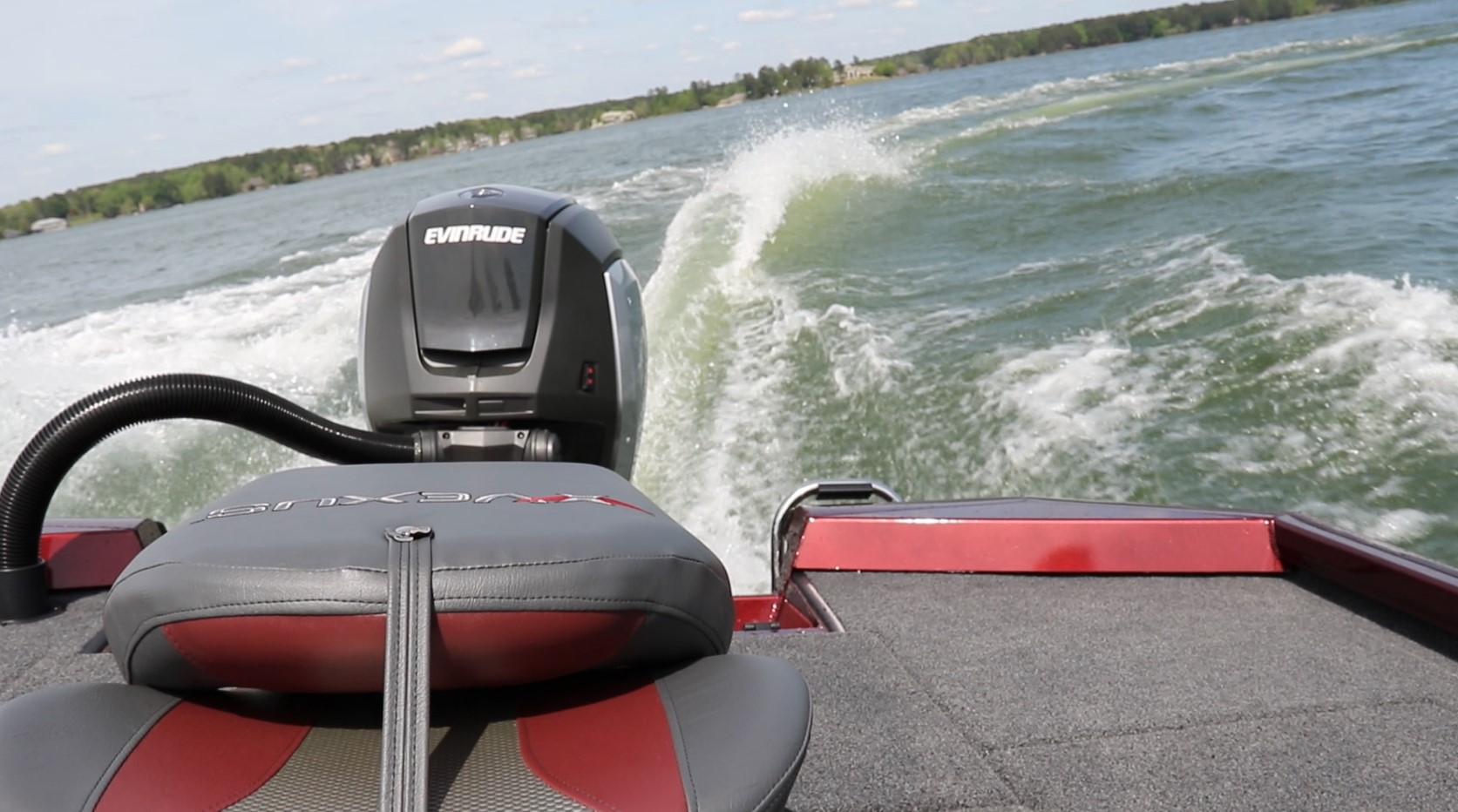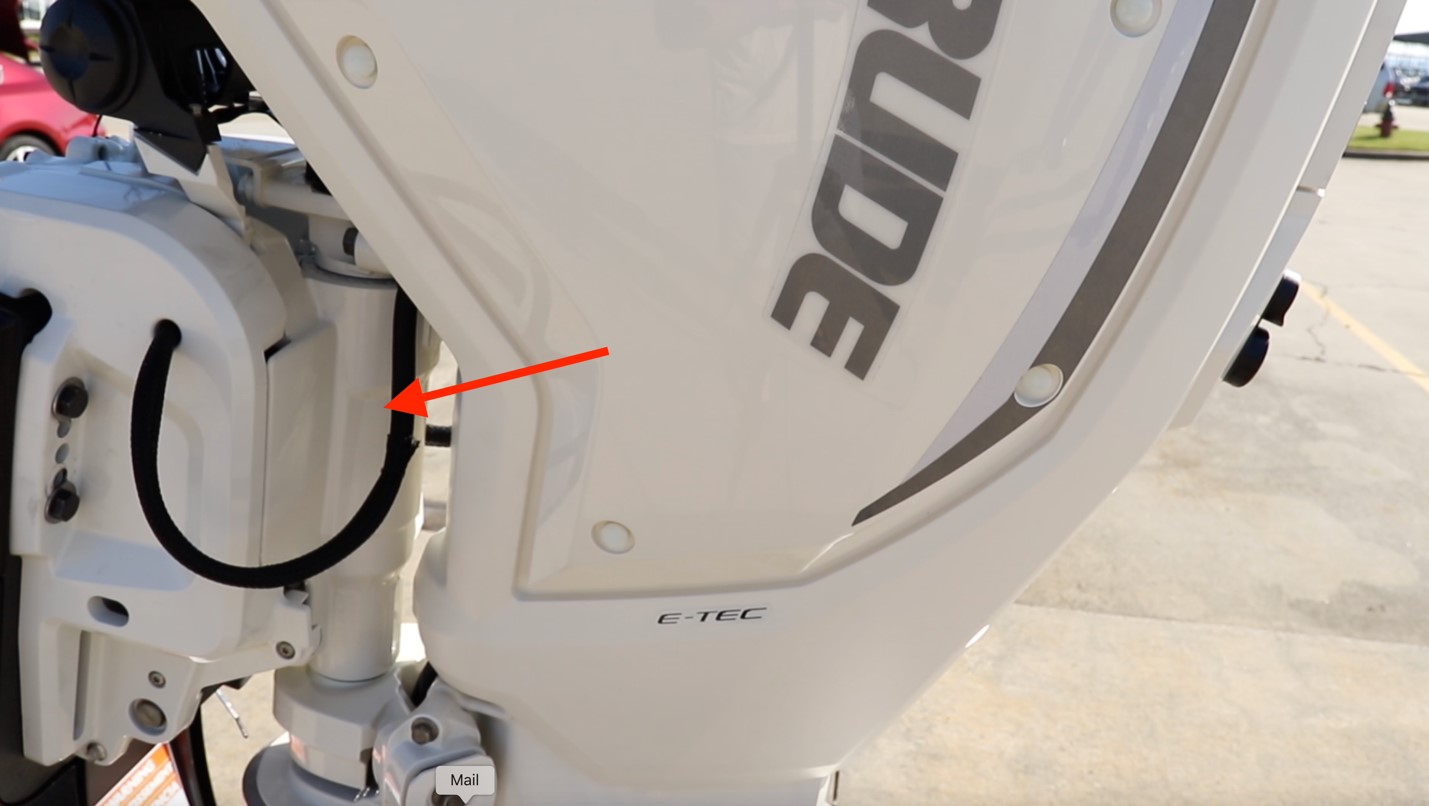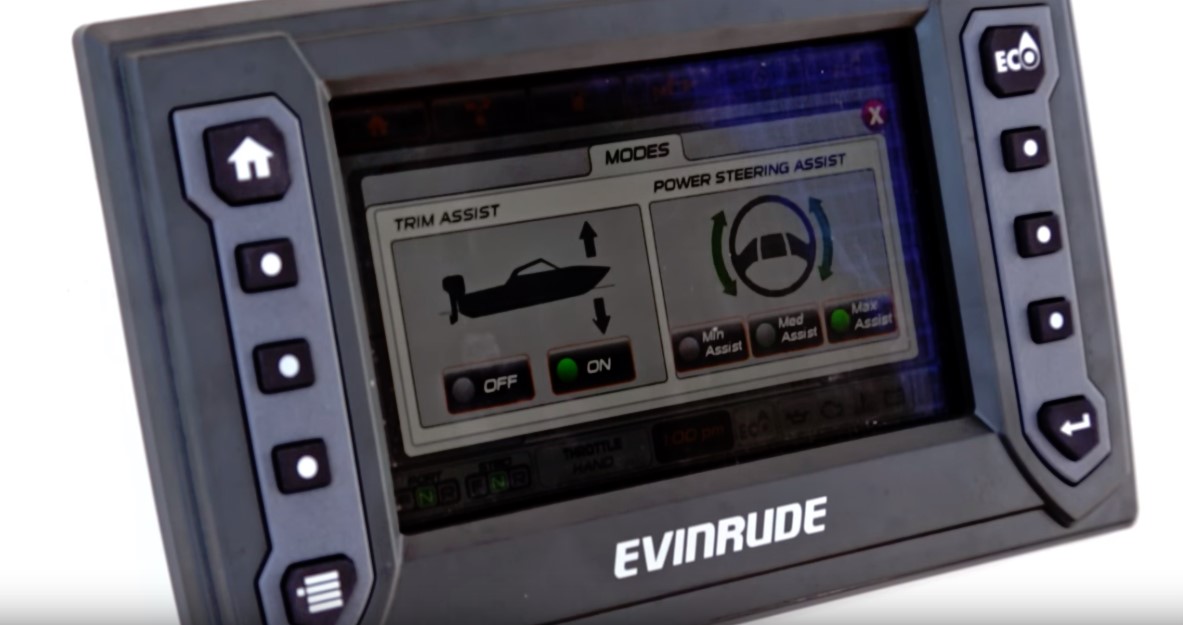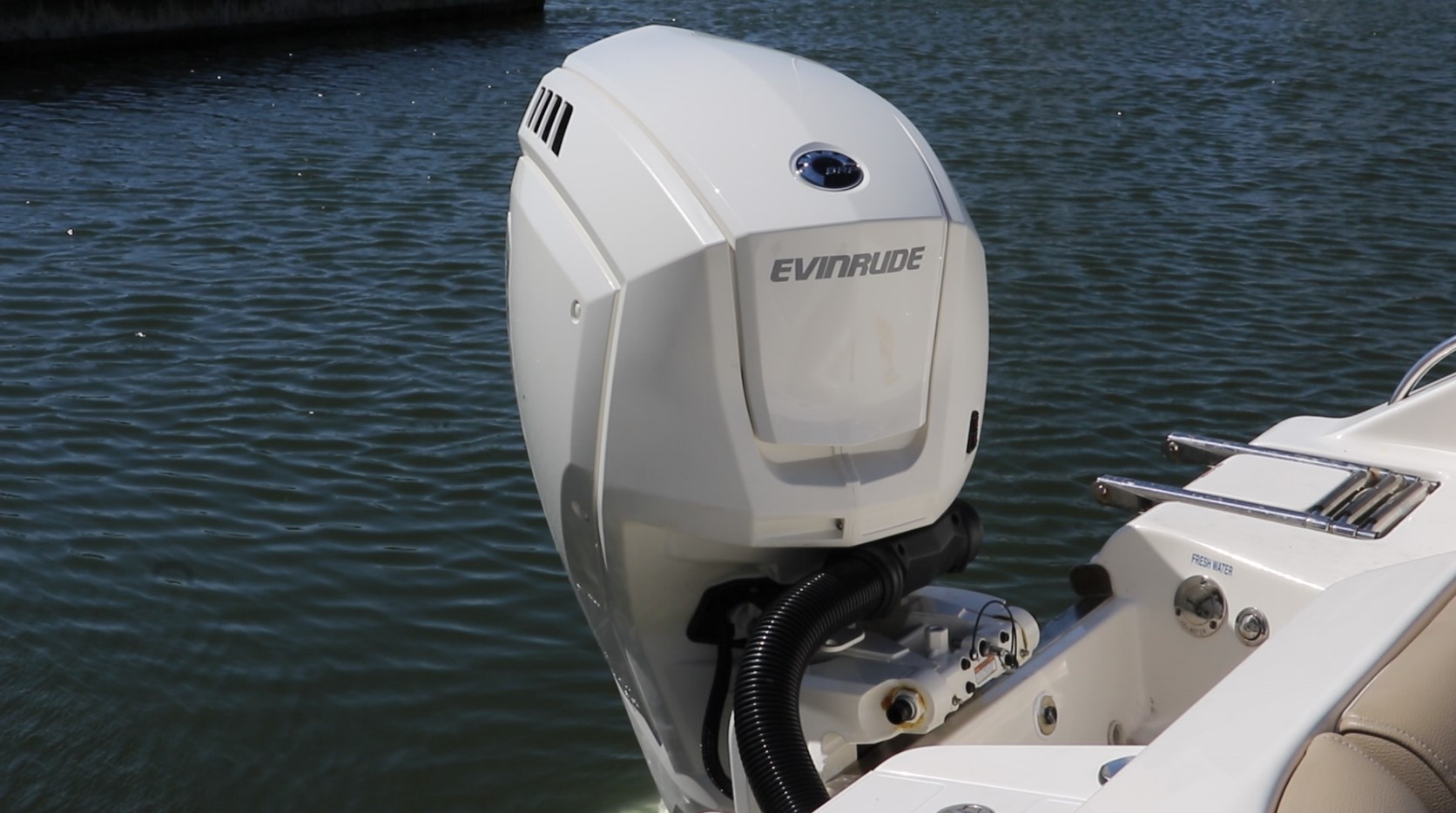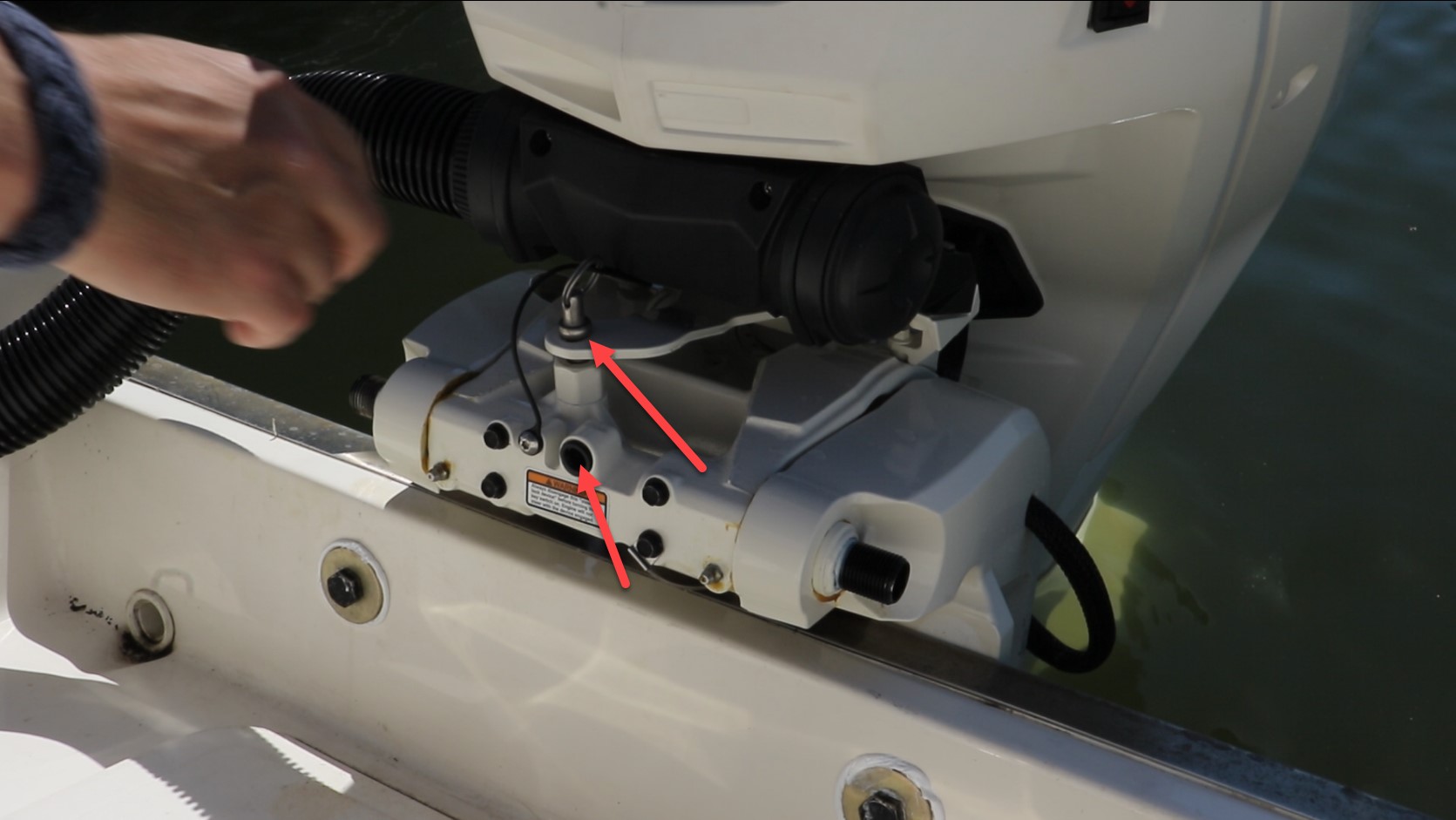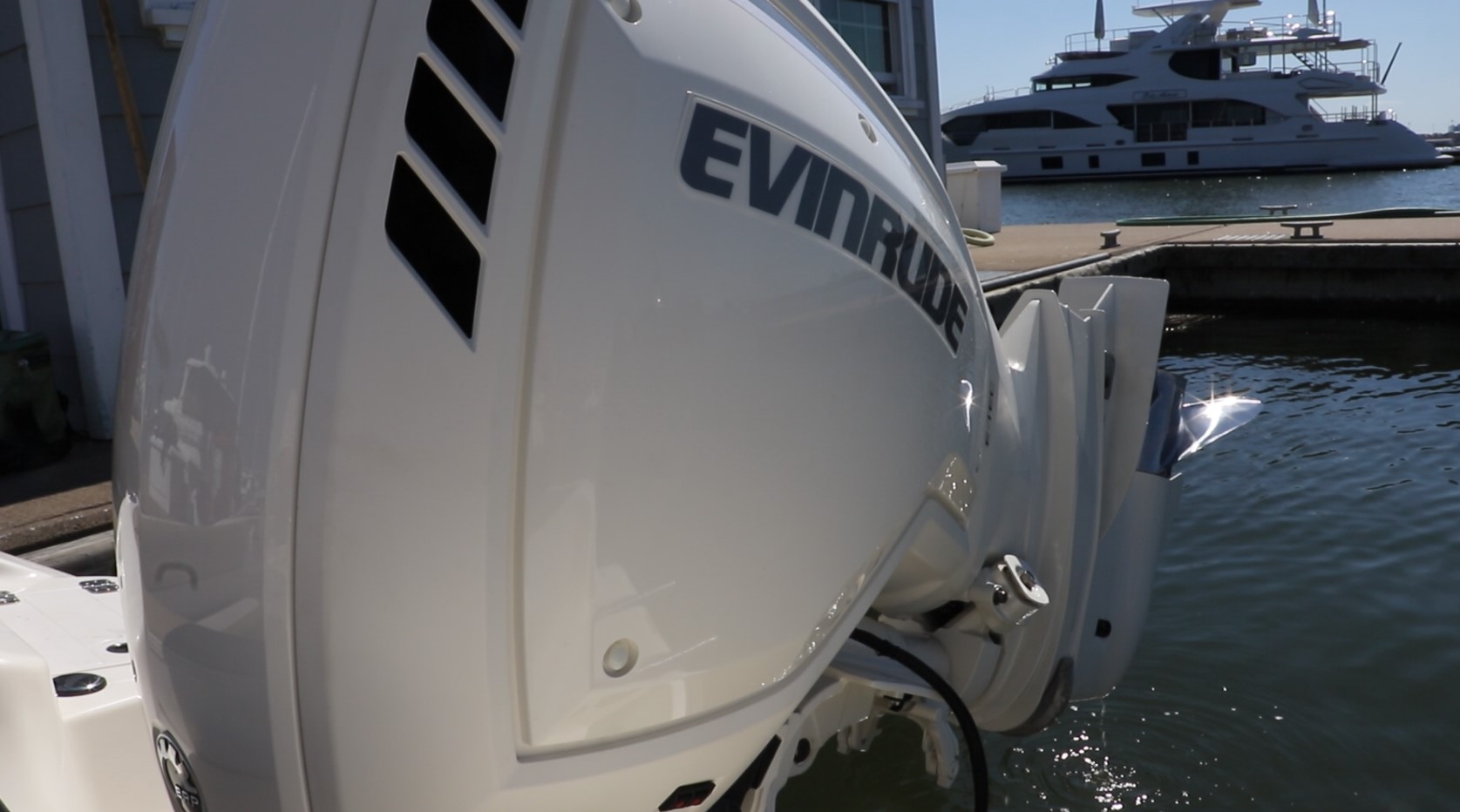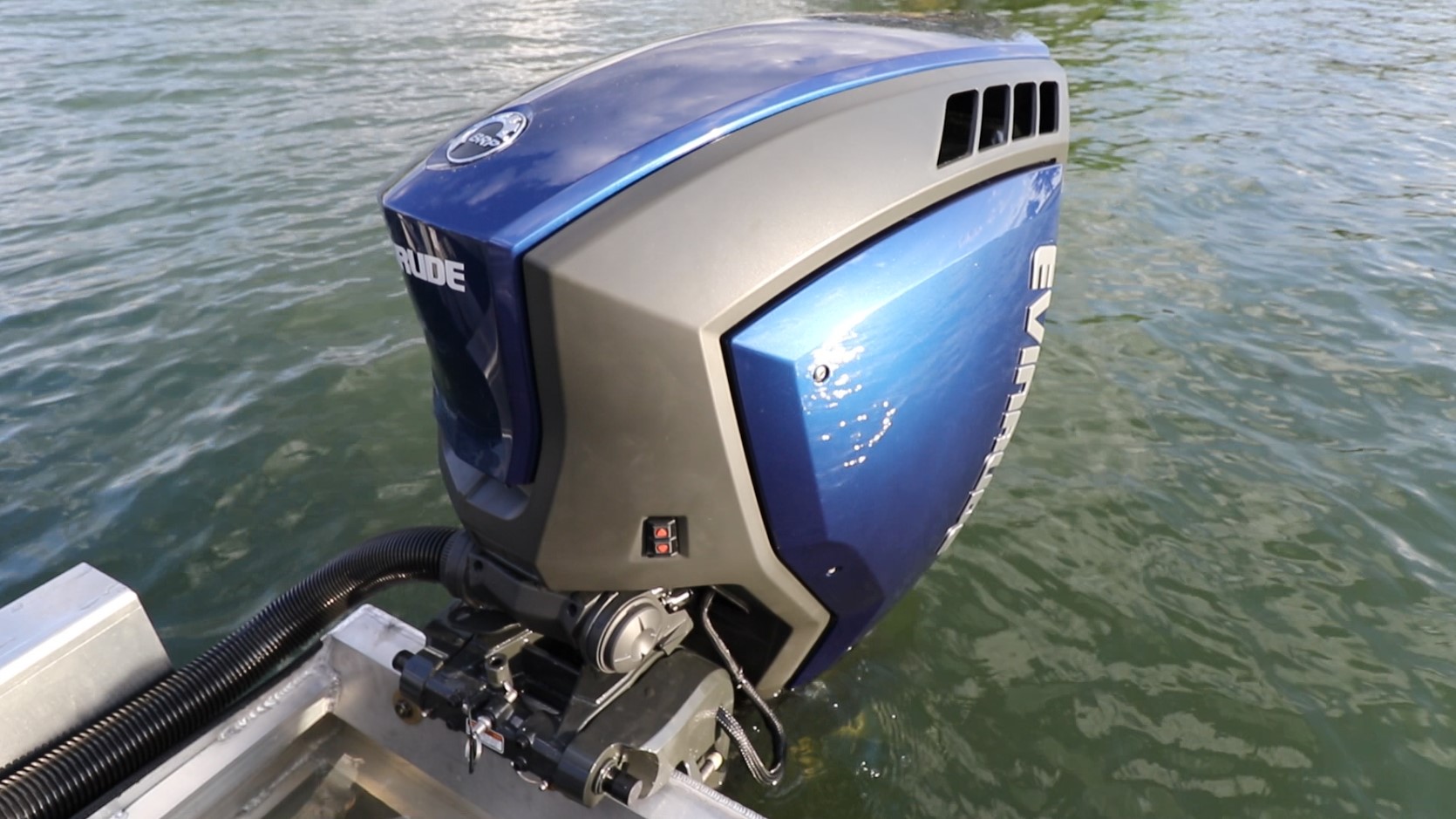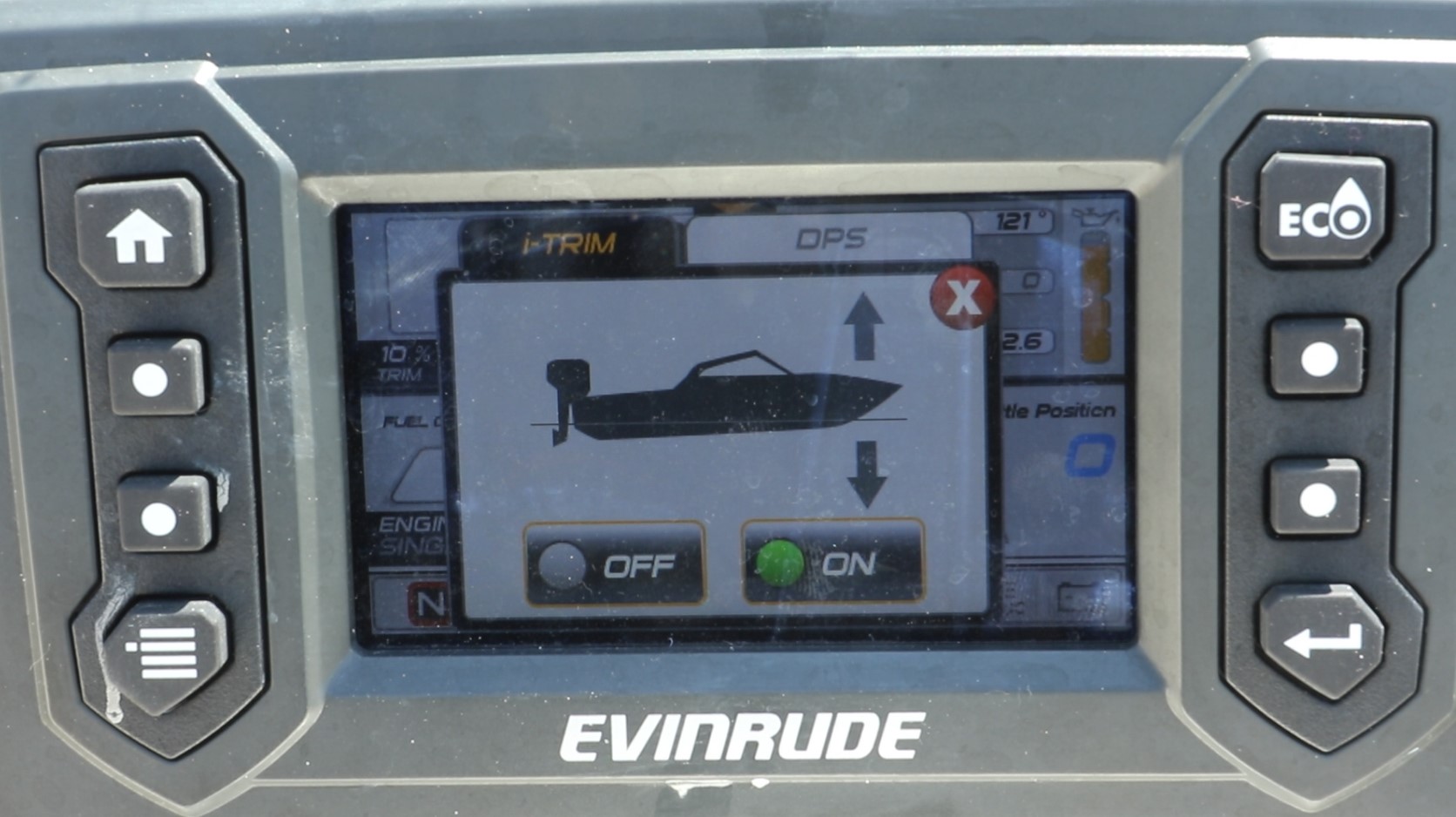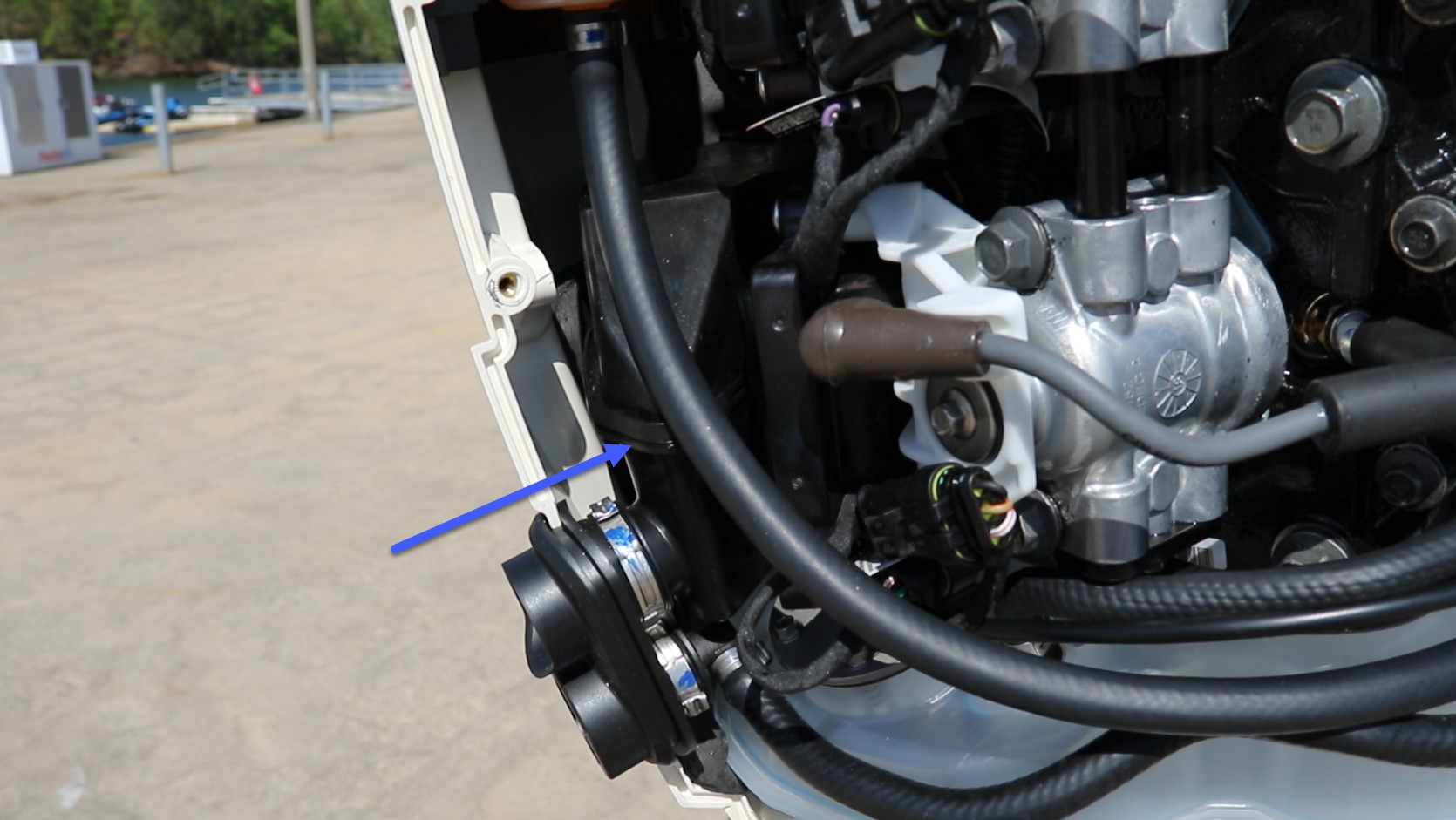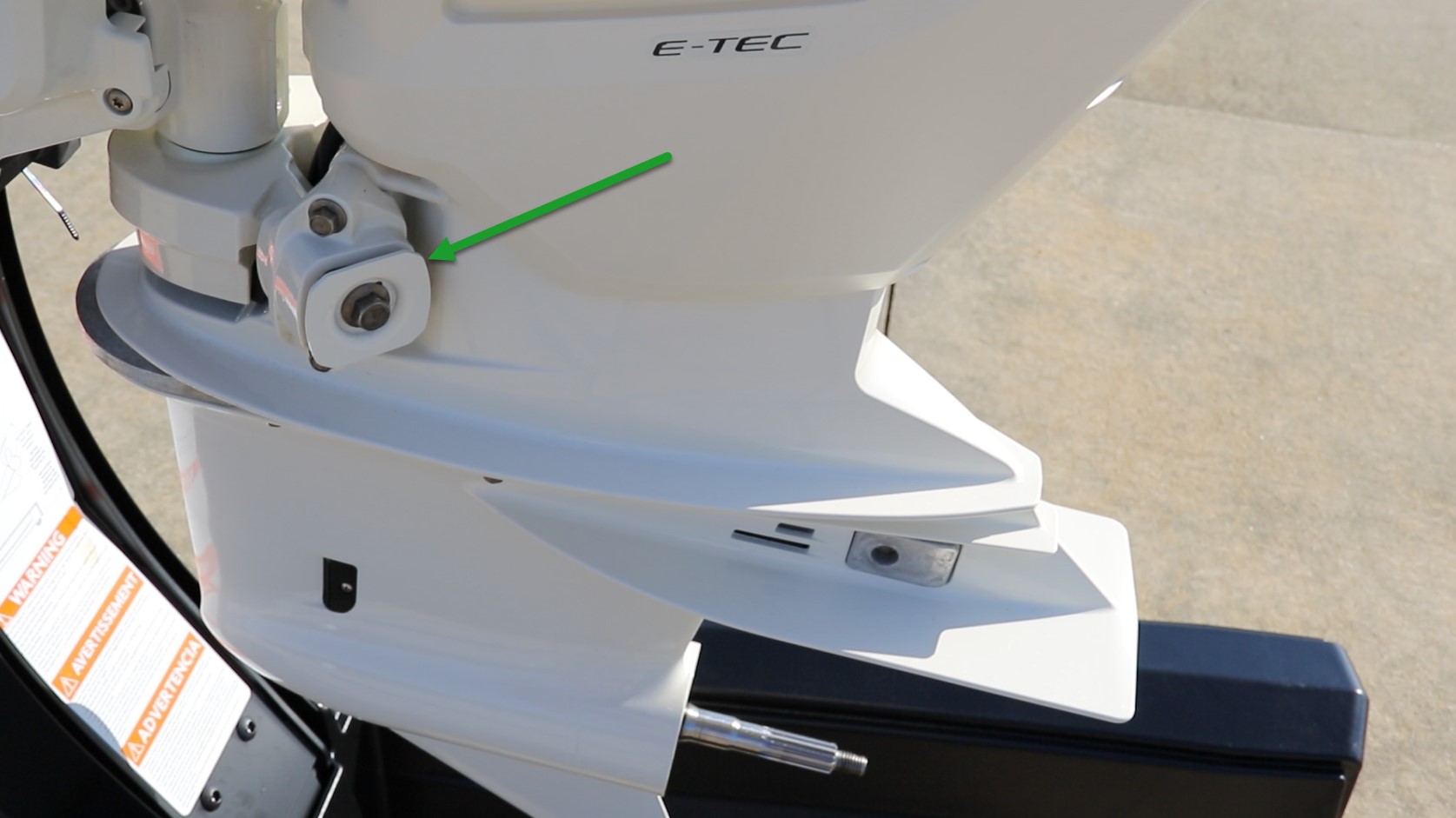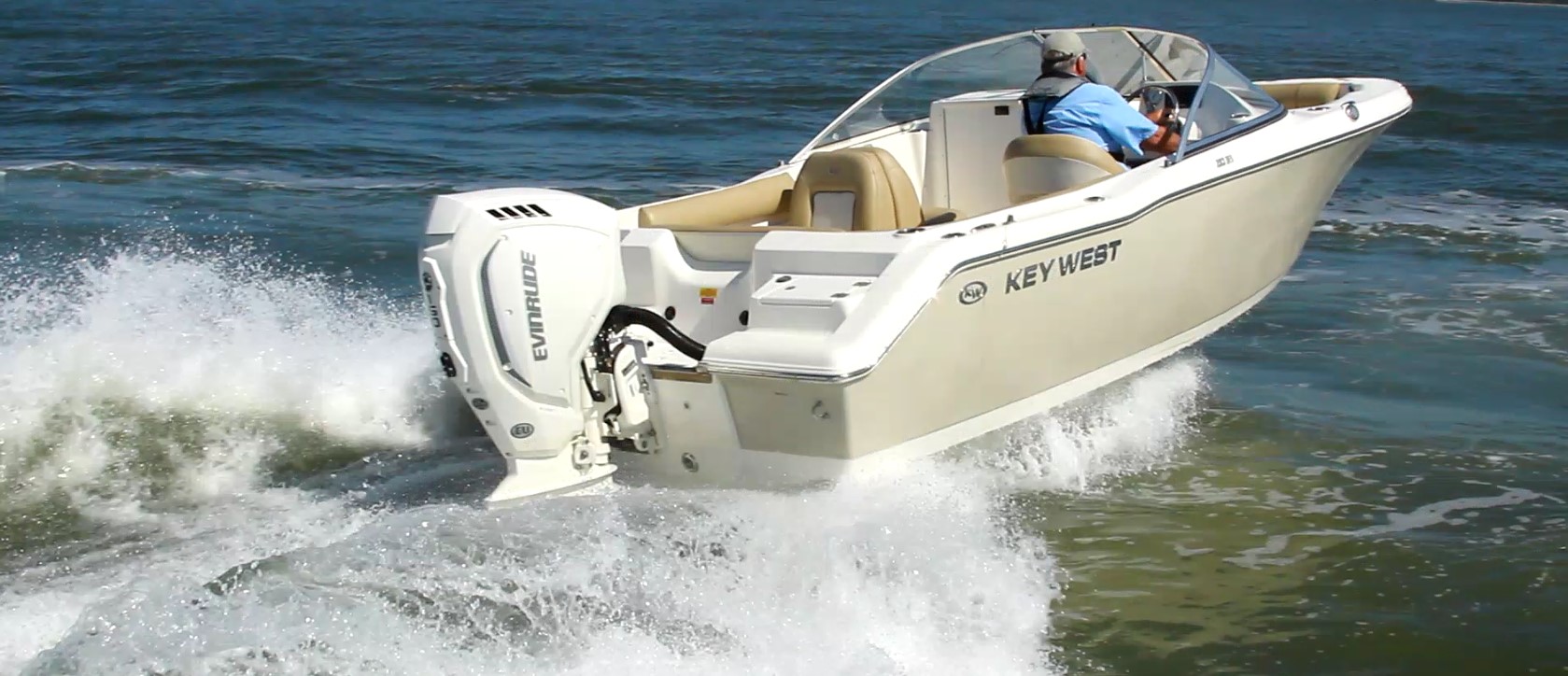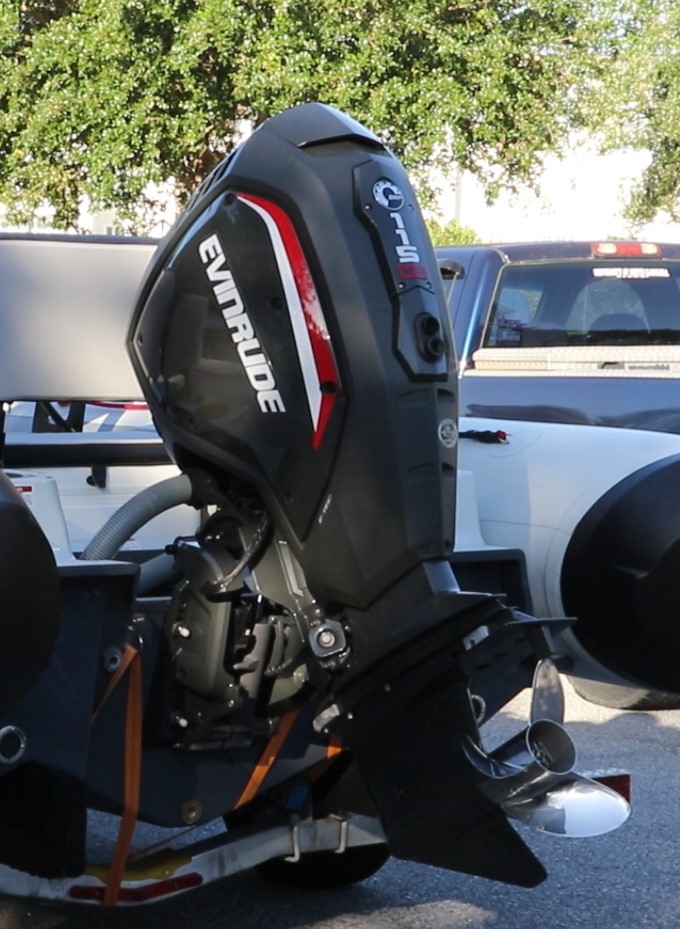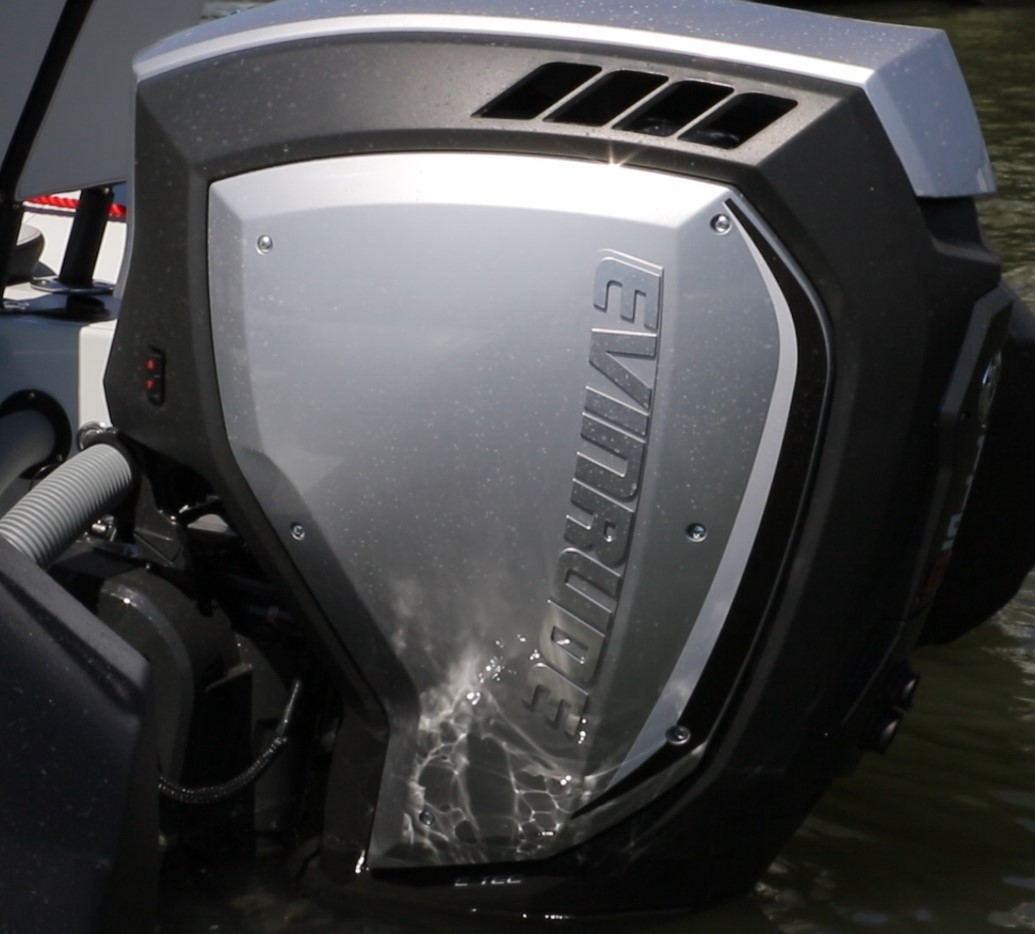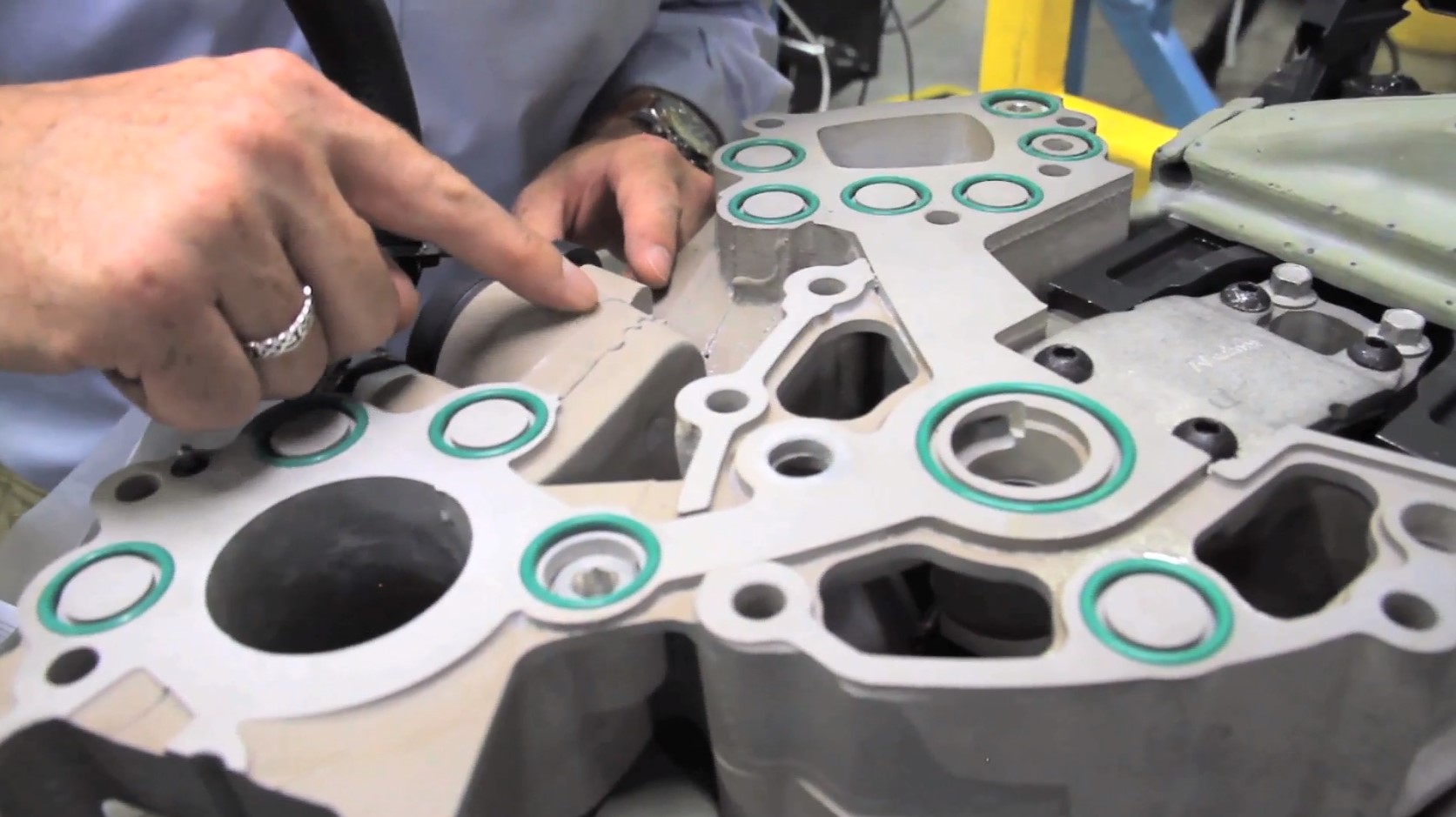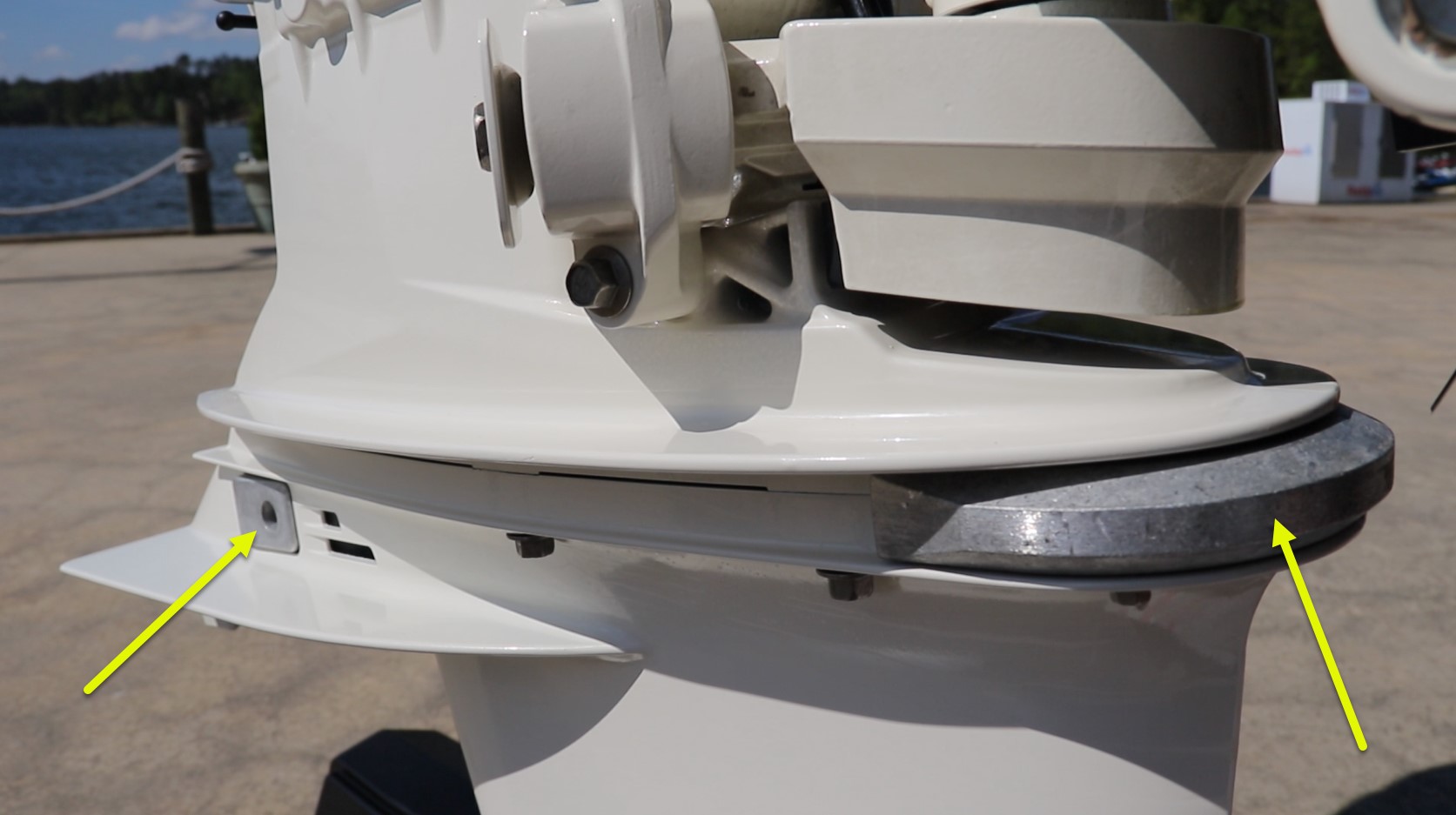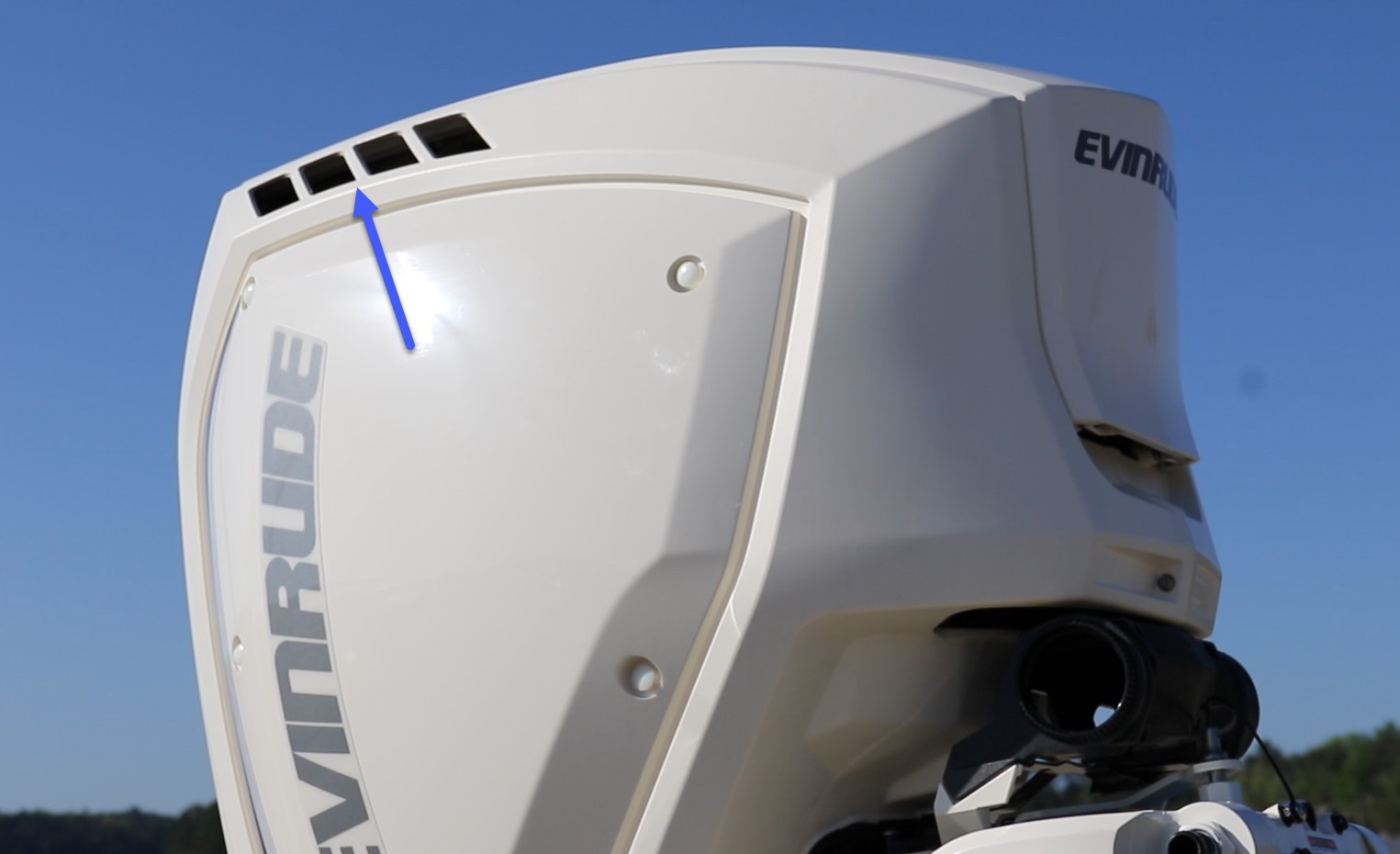Brief Summary
Evinrude has announced the addition of three mid-range engines to their G2 lineup: the 150 HP, 140 HP and the subject of today’s report, the 115-HP HO. The Evinrude E-TEC G2 115-HP H.O., which stands for High Output, (10% above the engine’s horsepower rating), has additional features the other new 3-cylinder engines do not. All the new 2-stroke G2s have the ability to be steered via wheel with Evinrude’s built-in hydraulic steering, but the 115 is also available with tiller steering.
Key Features
- Cleanest emissions, 3-star CARB rated
- Industry leading 2-stroke torque
- Designed to run on regular 87 octane gas
- Fly-by-wire DTS controls
- Built-in oil reservoir – never needs oil changes
- iTrim automatic engine trim
- ICON touch screen engine display
Specifications
| Type of Engine | 2-Stroke |
|---|---|
| Number of Cylinders | 3 |
| Horse Power | 115 |
| Configuration | |
| Weight | 390.00lbs |
| Fuel Type | Gasoline |
| Fuel Delivery | Fuel Injected |
| Shaft Length Options | 20" (508 mm), 25" (635 mm) |
| Shift Throttle Control | |
| Displacement | 0.00cu in |
| Steering Control | |
| Recommended Fuel | N/A |
| Alternator Output | Net Amps 14 idle / 22 wot |
| CARB Rating | |
| Engine Monitoring System |
Captain's Report
Captain's Report by Capt. Peter d’Anjou
Mission
Evinrude’s goal was to bring previous G2 technology to the 115-hp to 150-hp level. The new 115 H.O. engine incorporates digital throttle and shift, direct fuel injection, and internal steering like the other G2s, all of which is previously unheard of in this horsepower range.
These engines have more torque than their 4-stroke contemporaries as well as better emissions and fuel efficiency, plus all the features of their larger G2 forebears.
The new engines, including the E-TEC G2 115 H.O., the E-TEC G2 140, and the E-TEC G2 150, fill a need in the market where the four-stroke outboards just don’t have the torque needed to power the beamier, equipment-loaded boats that boaters are finding on the market today.
The standard G2 engine features are complemented by cost-effective repower options such as the ability to continue to use existing external hydraulic steering and even old cable Teleflex steering in place of Evinrude’s internal steering.
Distinguishing Features
- Tiller steering or built-in dynamic power steering
- 3-cylinder powerhead
- Direct fuel injection into the cylinder
Major Features
- Beefed up lower-end gears with expansion oil reservoir
- Magneto charging system
- Focused engine mounts
- One-Touch winterization
Because it’s built with an all-new two-stroke, 3-cylinder powerhead, this outboard weighs in at just 390 pounds. Some 115-horsepower outboards are lighter, but they produce 10-percent less horsepower and don’t include an integrated power steering system.
Performance
BoatTEST tested four different boats with the new Evinrude E-TEC G2 115 H.O. engine, all with different applications. Let’s first have a look at how each performed.
Evinrude E-TEC G2 115 H.O: Bass Boat
First, we tested the E-TEC G2 115 H.O. on an obvious choice for this horsepower: a bass boat. The Vexus AVX1880 has a LOA of 18’10” (5.74 m) and a beam of 7’11” (2.41 m). With an empty weight of 1,500 lbs. (680 kg), 24 gallons (91 L) of fuel and two people onboard, we had an estimated test weight of 2,084 lbs. (945 kg).
With a single Evinrude E-TEC G2 115 H.O. outboard powering our test boat, the Vexus AVX1880, we reached a top speed of 50 mph (80.5 kph) at 5750 rpm. Best economic cruise came in at 3000 rpm and 26 mph (41.8 kph). It was at that speed that the 3.3 gph (12.5 lph) fuel burn translated into 7.9 mpg (3.35 kpl) and a range of 227 statute miles (365 km).
For acceleration, the Vexus AVX1880 got on plane in an average time of 3.4 seconds and went from zero to 20 mph in an average of 5.6 seconds.
Acceleration
Time-to-Plane: 3.4 seconds
0 to 20 MPH: 5.6 seconds
Another feature of the outboard that revealed itself on our test: bass-boat designs place the driver quite close to the engine. At cruising speeds, we recorded decibel readings in the mid 80s which is generally the same or quieter than 4 and 6 cylinder engines, even though this is a 2-stroke engine. The old saw that 2-stokes are louder than 4-strokes doesn’t hold for the new E-TEC G2 115 H.O.
Evinrude E-TEC G2 115-HP HO: Bay Boat
Next Up, was a Bay Boat. We tested the E-TEC G2 115 H.O. on the Blazer Bay 1900 with a LOA of 18’8” (5.69 m) and a beam of 7’8” (2.34 m). With an empty weight of 1,400 lbs. (635 kg), 32 gallons (121.1 liters) of fuel and two people onboard, we had an estimated test weight of 2,402 lb. (1,090 kg).
With a single Evinrude E-TEC G2 115 H.O. outboard turning a 14.5” x 19” (36.83 x 48.26 cm) RX3 prop, our Blazer Bay 1900 test boat reached a top speed of 42.6 mph (68.5 kph) at 5230 rpm. Best economic cruise came in at 3500 rpm and 27.5 mph (44.3 kph). It was at that speed that the 4.8 gph (18 lph) fuel burn translated into 5.8 mpg (2.46 kpl) and a range of 167 statute miles (268 km).
For acceleration, the Blazer Bay 1900 got on plane in an average time of 3.5 seconds and went from zero to 20 mph in an average of 4.1 seconds, and on to 30 mph in 6.3 seconds.
Acceleration
Time-to-Plane: 3.5 seconds
0 to 20 MPH: 4.1 seconds
0 to 30 MPH: 6.3 seconds
RIB
We then tested the Evinrude E-TEC G2 115 H.O. on a RIB, which makes sense since all RIBs benefit from the torque and performance of two-stroke outboards. Our boat was the Zodiac Open 5.5 with a LOA of 17’9” (5.41 m) and a beam of 8’4” (2.54 m). With an empty weight of 1,290 lb. (585.1 kg), 26.4 gal. (99.93 liters) of fuel and two people onboard, we had an estimated test weight of 2,283 lbs. (1,036 kg).
With the Evinrude E-TEC G2 115 H.O. outboard powering our Zodiac Open 5.5 test boat, we reached a top speed of 46.5 mph (74.8 kph) at 5350 rpm. Best economic cruise came in at 3000 rpm and 23.2 mph (37.3 kph). It was at that speed that the 3.7 gph (14 lph) fuel burn translated into 6.3 mpg (2.66 kpl) and a range of 149 statute miles (239 km).
For acceleration, the Zodiac Open 5.5 got on plane in an average time of 3.5 seconds and went from zero to 20 mph in an average of 6.5 seconds, and on to 30 mph in 10.2 seconds.
Acceleration
Time-to-plane: 3.5 seconds
0 to 20 mph: 6.5 seconds
0 to 30 mph: 10.2 seconds
Aluminum Multi-Species Boat
Finally, we tested the Evinrude E-TEC G2 115 H.O. on an aluminum multi-species boat. Evinrude has gone the extra mile to appeal to this market segment, and developed an innovative tiller control for this outboard. We tested it on the Alumacraft Competitor 205 with a LOA of 20’6” (6.25 m) and a beam of 8’ (2.44 m). With an empty weight of 1,616 lb. (733 kg), 45 gal. (170.3 liters) of fuel and 2 people onboard, we had an estimated test weight of 2,306 lb. (1,046 kg).
With the Evinrude E-TEC G2 115 H.O. outboard powering our Alumacraft test boat, we reached a top speed of 41 mph (74.8 kph) at 5100 rpm. Best economic cruise came in at 2500 rpm and 17.5 mph (28.1 kph). It was at that speed that the 2.5 gph (9.5 lph) fuel burn translated into 6.1 mpg (2.97 kpl) and a range of 283 statute miles (455 km).
For acceleration, the Alumacraft Competitor 205 got on plane in an average time of 3.9 seconds and went from zero to 20 mph in the same amount of time. She went from zero to 30 mph in 6.1 seconds.
Acceleration
Time-to-plane: 3.9 seconds
0 to 20 MPH: 3.9 seconds
0 to 30 MPH: 6.1 seconds
Evinrude E-TEC G2 115-HP HO: Other Applications
The new mid-range Evinrude E-TEC G2s are ideal for:
- bass boats
- aluminum multi-species boats
- bay and flats boats
- small dual consoles and center consoles
- pontoon boats
- tow-sports boats
- small bowriders
- inflatables, and entry level boats of all kinds
Design
The conceptual drawing demonstrates how two-stroke engines deliver power in one revolution of the crankshaft. A cylinder in a 4-stroke engine only fires on every other revolution of the crankshaft.
The advanced technology of computer-aided design to map the shape of the cylinder head for optimal direct injection of fuel, coupled with a water-cooled brain module (EMM) that times ignition to lower emissions was the most significant advance in the original G2 line. With the introduction of these new 3-cylinder mid-range engines, Evinrude is further incorporating, improving, and expanding the technology.
New Features. The 3-cylinder engines are bringing new tech to the G2 line, including balancing gears to offset the crankshaft rotation and introducing vibration mounts. Evinrude has also redesigned a more efficient lower unit with water pickups for shallow water operation and added a split exhaust which goes through a muffler box at idle.
All the great things from the G2 line are here, plus a whole lot of new features, in a competitively priced package.
Direct Fuel Injection
At the heart of the new E-TEC G2 115 H.O. is Evinrude’s direct-injection fuel system. It is unlike any other system in class for two reasons.
- First, the injector is actually in the cylinder head and not in the intake manifold like it is in 4-stroke engines.
Because of that position, the Evinrude employs a more robust injector that uses a magnet and coil to act on an electrical pulse sent by the EMM (brain module) to deliver the correct amount of fuel at any given throttle setting, functioning with refinement similar to that of a stereo speaker, up to 100 times a second.
- Second, at low RPM, only a small amount of fuel — like champagne bubbles, according to Evinrude — is injected into the smaller top section of the cylinder. This is called “stratified combustion,” which uses less fuel for more efficiency and cleaner operation.
At high rpm, the engine switches to what’s known as homogeneous combustion and more fuel is injected to the whole cylinder using the full bore and stroke to produce excellent mid- and high rpm-range torque and power. The result is an engine that Evinrude says is twice as fuel-efficient under 1000 rpm.
Emissions
The Evinrude E-TEC G2s have the lowest emissions of all outboard engines according to the EPA. They have 3-star CARB (California Air Resources Board) ultra low emission ratings as well as EU RCD (European Union Recreational Craft Directive) II compliance ratings.
Torque
The rotational equivalent of linear force, torque has distinguished Evinrude’s superior 2-strokes from 4-stroke design. More force applied at the prop means quicker time to plane and better responsiveness.
This relationship has always been true, and is why bass fisherman have long preferred 2-stroke outboards of any brand over 4-stroke engines.
Advanced Oil Lubrication System
Evinrude’s onboard oil reservoir, holds 1.9 gallons (7.19 L). While this lasts most people an entire season, if oil runs low, adding more is as simple as turning a cap in the top of the engine and adding oil – no messy oil change.
Once the top cowling section is removed, the yellow oil-fill cap is visible on top of the engine. When the reservoir is filled, the oil supply will last for 50 to 60 hours of engine run-time, a whole season for most boaters, and usually, it’s even longer for low-rev pontoon boats which spend about 60% of their time under 1000 rpm.
Oil is not mixed with the fuel. Instead, lubrication is its own completely separate system, sending a carefully metered amount of oil through clear tubes to bathe the cylinder walls in clean oil as needed.
A tiny amount of oil is burned in combustion, and because it is added to the exhaust, it’s included in the emissions of the outboard – and Evinrude still has lower emissions.
The Evinrude engine never needs oil changes, and its oil is always clean, reducing the chance for cylinder wear. It is nearly a major project to change the oil of some outboard engines, require some disassembly and tools. Once the oil has been trained out, then the question is where to dispose of it. Pouring it down the sewer is not an option anymore.
The new Evinrude 150 needs no break-in period — 4-stroke engines permit only limited revolutions for the first few hours.
The result is that the Evinrude outboards—already the lowest-emission outboard available — are even cleaner than the competition.
Under the removable top cowling are the rigging connections for the fuel line, an external oil tank, the forward freshwater flush line, the Evinrude proprietary network connection controlling throttle and shift, and the low-oil-level alert connection. There is also the NMEA 2000 connection to the boat’s systems to integrate with helm units from Simrad, Lowrance, Garmin, and Hummingbird.
Winterization
Yet another feature of the Evinrude oiling system is automatic winterization. The engine can be readied for off season storage with a tap of the Evinrude iTouch display or the BRP eLink smartphone app, while the engine is running, either hooked up to fresh water or at the launch ramp in freshwater.
This means that owners can winterize their own engines without the cost and hassle of taking the engine back to the dealer.
Winter Boating. It also means, that if there is a pleasant day in the middle of winter (thanks to global warming), the engine can be commissioned by the owner in 2 minutes and be out on the water and have the whole lake or sound to one’s self.
Magneto Charging System
On the top of the engine under the black plastic cover, is a magneto, which uses simple coils and magnets under the flywheel instead of an alternator. It has fewer parts and there are no pulleys, belts, or brushes to wear out or break. The magneto produces 133 amps of electricity. This is the most reliable system on the market.
Gear Oil Reservoir
Water in the lower-unit gear case oil, shown draining above, is a major cause of engine failure. This happens for two reasons: either the oil level is low in the lower unit, allowing condensation to contaminate the oil, or a seal is compromised. Evinrude has solved both of those issues with an expansion tank for gear oil.
Evinrude uses an Ultra-HPF gear fluid, which can continue to lubricate even if it’s contaminated by up to 25 percent of its volume with water.
Regular Gas
The outboard runs on 87-octane fuel and has an internal fuel filter that also functions as a fuel-water separator.
Redesigned Lower Unit
The straight leading edge is designed to shed weeds. Anodes are placed prominently throughout, and the anti-ventilation plate has been shortened and positioned further aft to permit better water flow around the prop and still stop ventilation in rough conditions. Evinrude tells us that in normal conditions this allows the boat to stay on plane at lower speeds.
Features that make for easier operation by the driver are numerous and highlight Evinrude’s “driver-centric” approach, they include:
Internal Power Steering
Internal power steering is and option, and Evinrude is the only outboard maker that has it. But, the 115 H.O. can be steered by cable or external hydraulic steering as well. This is what makes the unit ideal for re-powering applications.
On the optional, power-steering unit, the hydraulic pump is integrated into the mounting bracket – and need not be located inside the boat as is required by all 4-stroke applications. This is a major advancement in outboard engine design and makes installation and re-power much easier and less costly.
Evinrude has provided re-power buyers with the ability to use the new engines with other manufacturers’ pre-existing steering to keep costs down. Namely, the outboard has a through-tube tilt tube for use with anti-feedback cable steering. It can also be used with bolt-on external hydraulic steering.
Dynamic Power Steering
In the many boats we’ve tested with Evinrude’s internal steering, the steering system was responsive and each turn of the wheel caused the boat to react immediately.
Helical worm gears over worm gears make for integrated power steering that gives excellent response. Evinrude’s dynamic steering lets the owner adjust the feel of the steering through the ICON touch display as the boat moves from low to high speed.
Clean Transom Installation
A dual-access rigging tube is fixed to the mounting bracket, so it stays put, while allowing the engine to rotate independently, providing for a cleaner transom and less wear on the components that connect the engine to the boat. There are no primer bulbs anywhere because the powerful fuel pump integral to the engine is self-priming.
iTrim
Evinrude included the iTrim automatic trim system in these outboards, helping the boat perform the way it should even with a novice at the wheel.
Exhaust
The outboard’s quiet operation is due to the way the exhaust is managed. An internal muffler box on its port side vents aft and quiets the engine at idle speeds. Above idle speed, the engine exhausts at the propeller hub.
Focused Motor Mount
To quell vibration on this three-cylinder engine Evinrude has designed counterweights on each end of the crankshaft. What vibration that is emitted is met by and dampened by what Evinrude calls “focused motor mounts.” These four mounts located in three locations isolate the power-head from the mounting bracket to reduce the vibration transmitted to the boat.
Color
Another feature that’s been added, top to bottom in the E-TEC G2 line, is that the engines are now available with a white exoskeleton to color match more boats out there.
And like all E-TEC G2 outboards, the side and top panels can be color-matched to the boat with a wide variety of colors and accent striping available.
Corrosion Resistant
All of that quick acceleration and top-end performance doesn’t mean anything if the engine doesn’t hold up in the marine environment. This all-new engine is ready for both fresh and saltwater.
The blocks are cast from high-grade aluminum alloy and only stainless steel fasteners are used throughout for added corrosion protection.
Warranty
Evinrude stands by the outboards with a 5-year corrosion warranty that is at least a year longer and more inclusive than any other outboard warranty.
Pricing
Pricing is up to the local dealer, but the folks at Evinrude tell us that pricing is competitive with most other outboard brands. Opt for the internal hydraulic steering and the Evinrude is much less expensive.
Observations
The all-new Evinrude E-TEC G2 115 H.O. is the latest addition to this series of technologically advanced direct-injected two-stroke outboards. Most impressive is the way Evinrude has coordinated the comprehensive features so seamlessly.
The move of G2 technology into the mid-range engine market is important because now consumers can have features never before offered by 4-stroke engine makers.
No other engines in class can boast of the torque, lightweight, low emissions, or driver-centric features these engines have.
Keep an eye out for our continuing tests of boats powered with this engine and reviews of her new three-cylinder stablemates, the 140-hp and the 150-hp.
